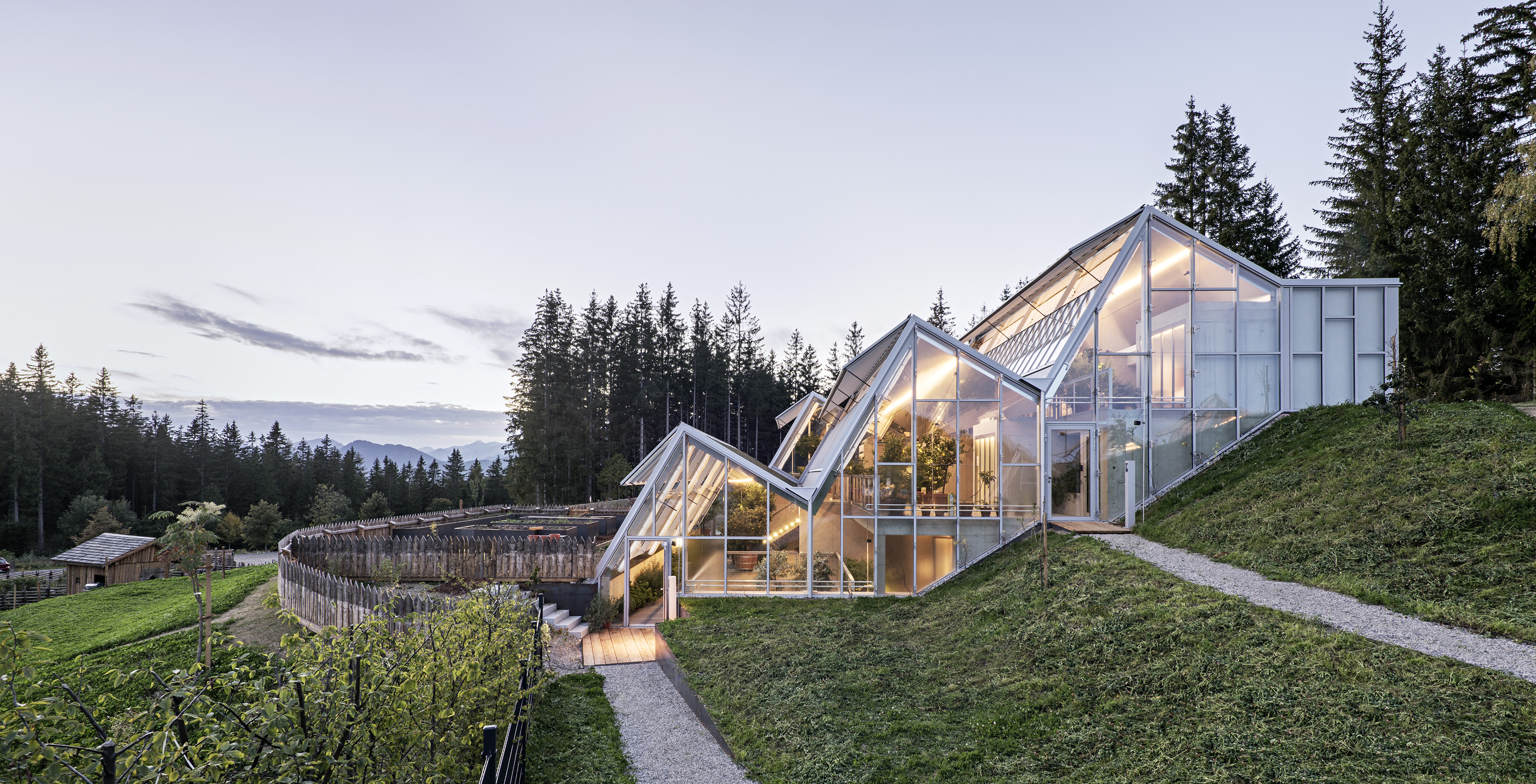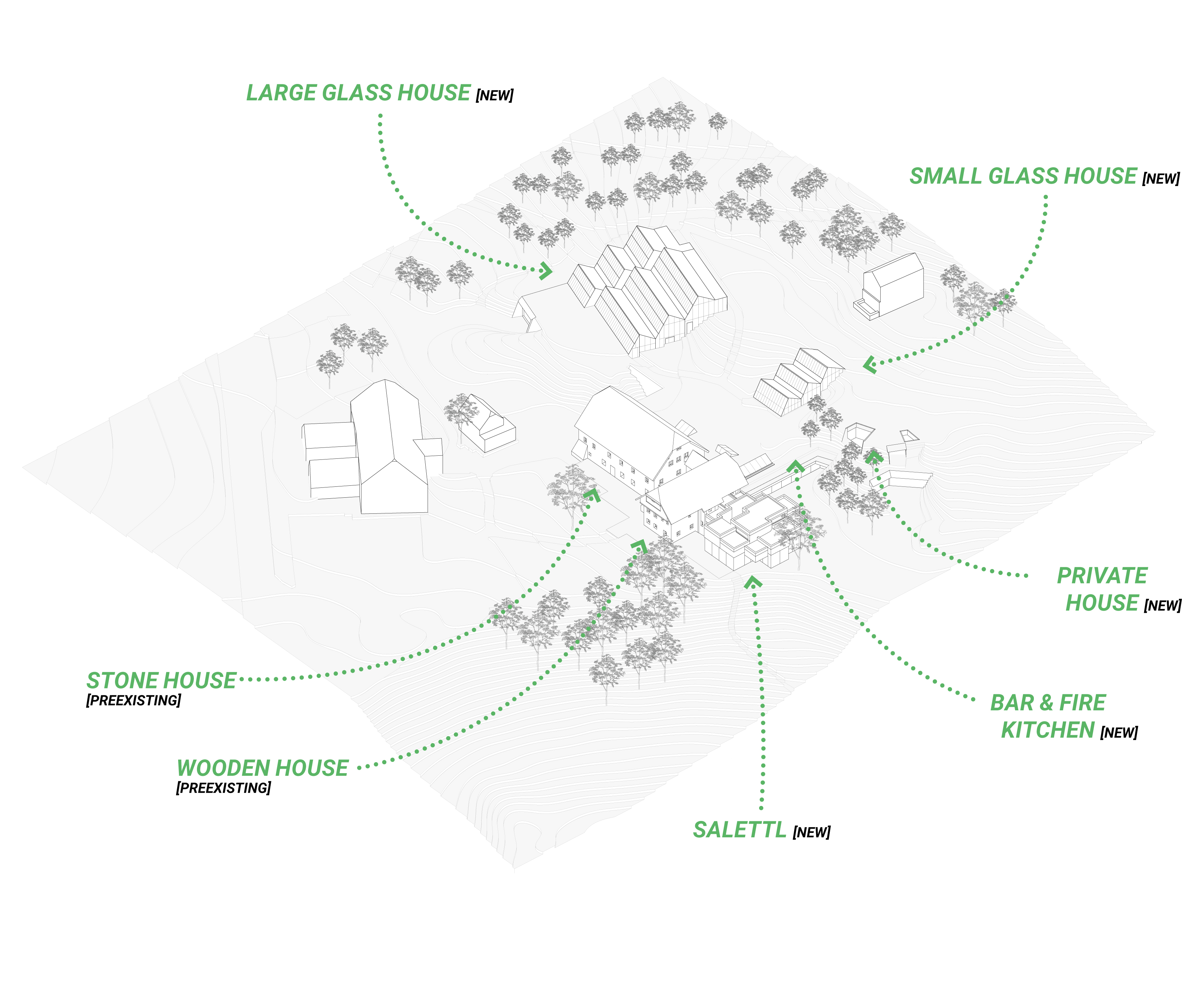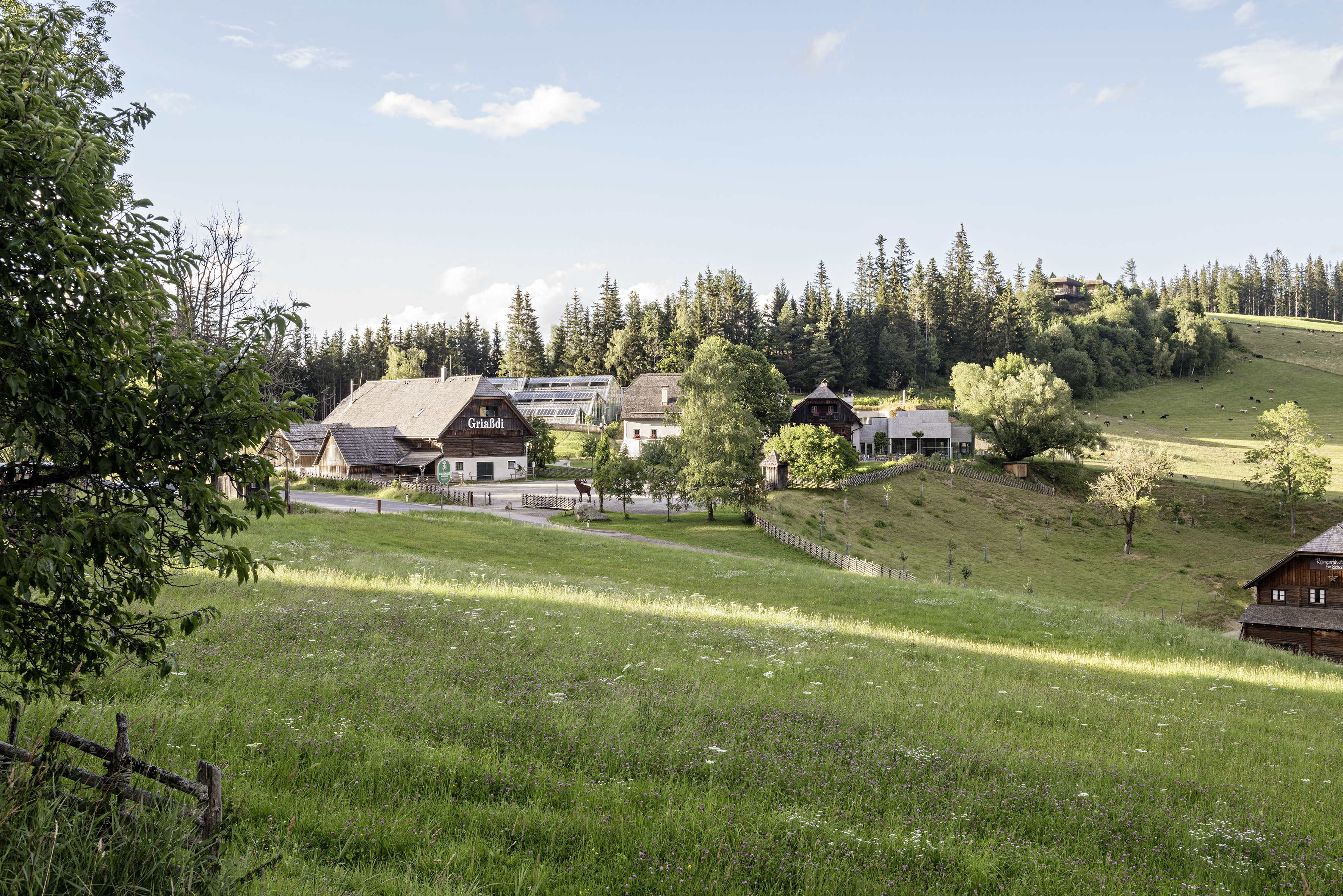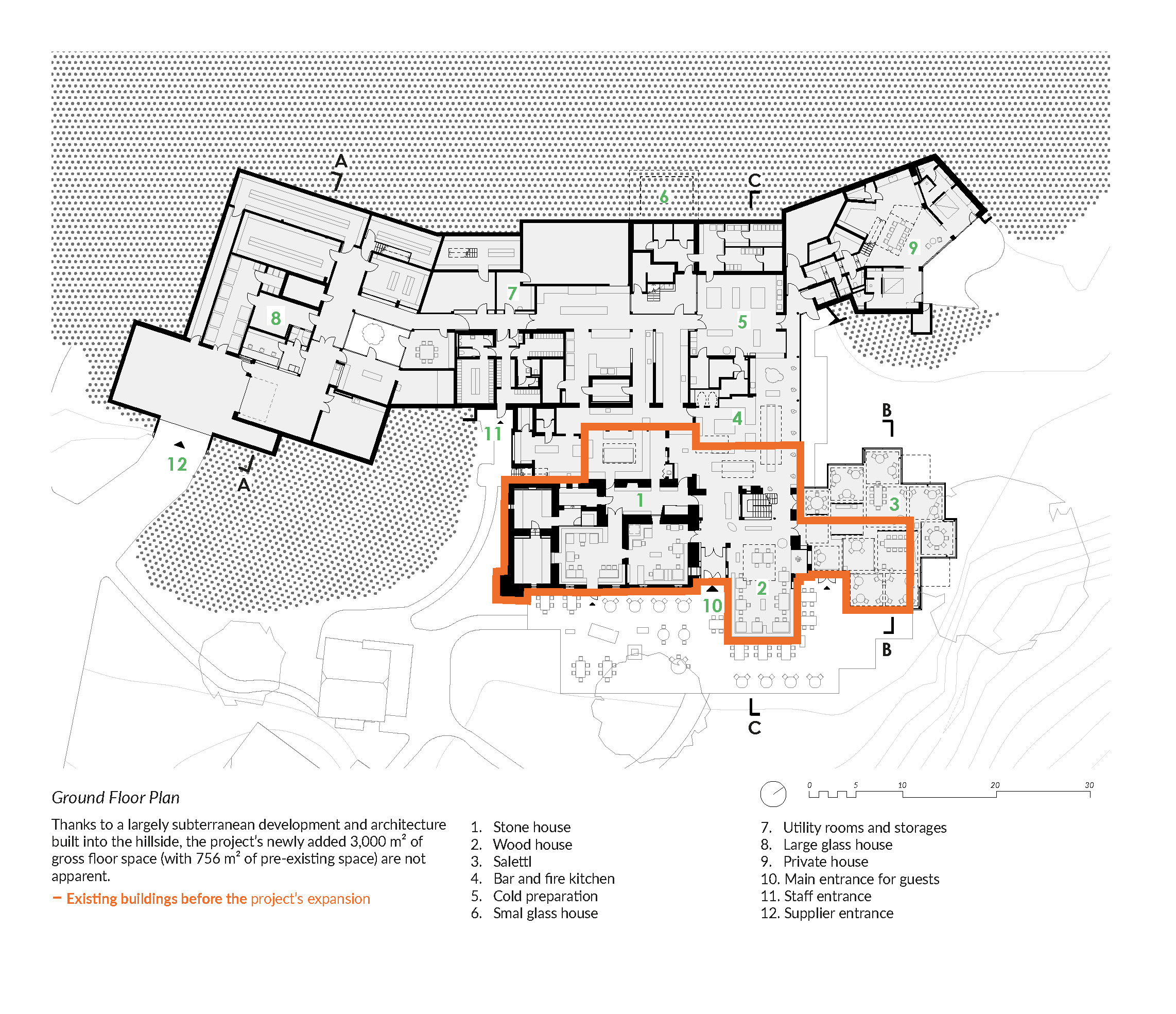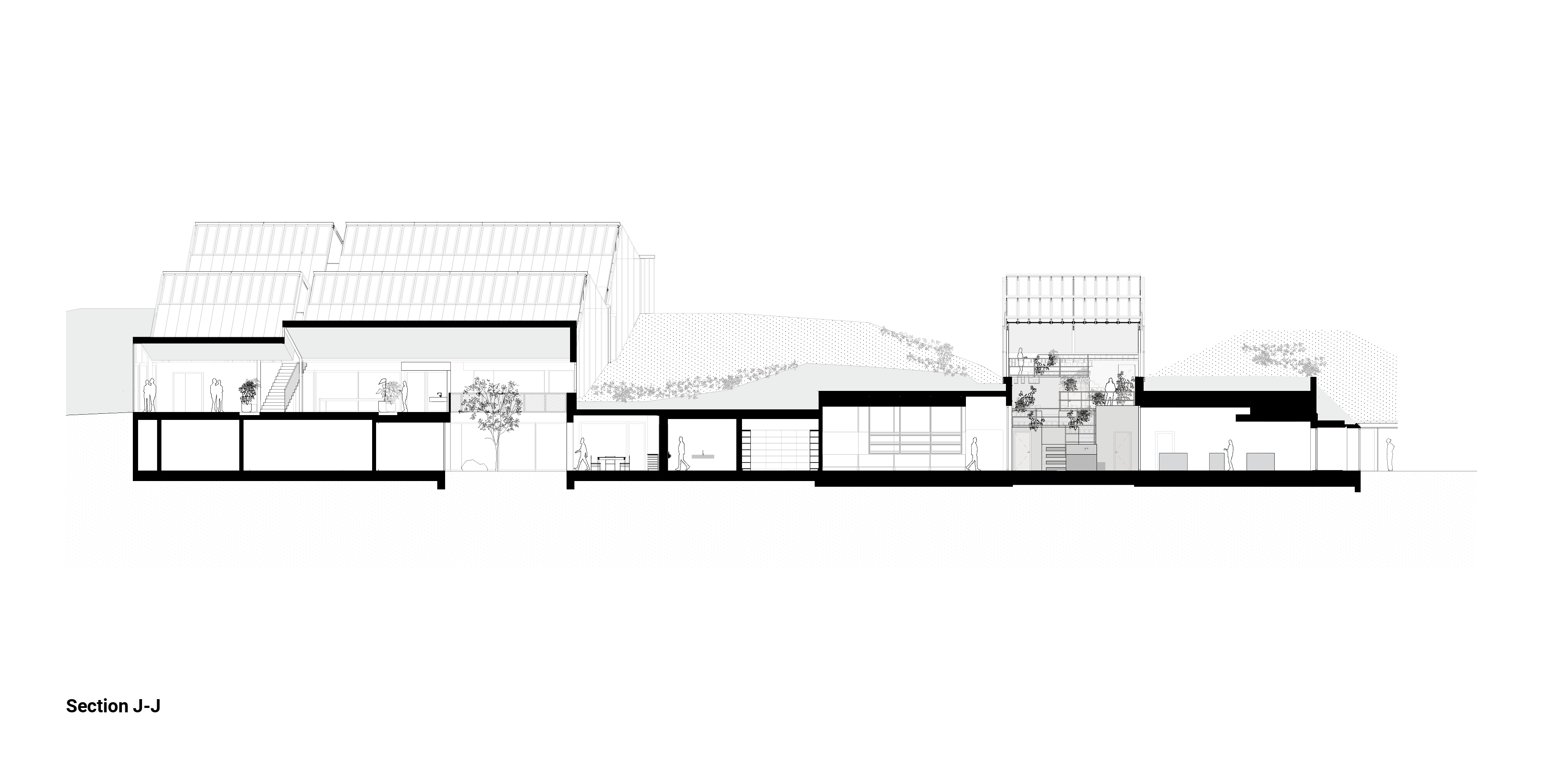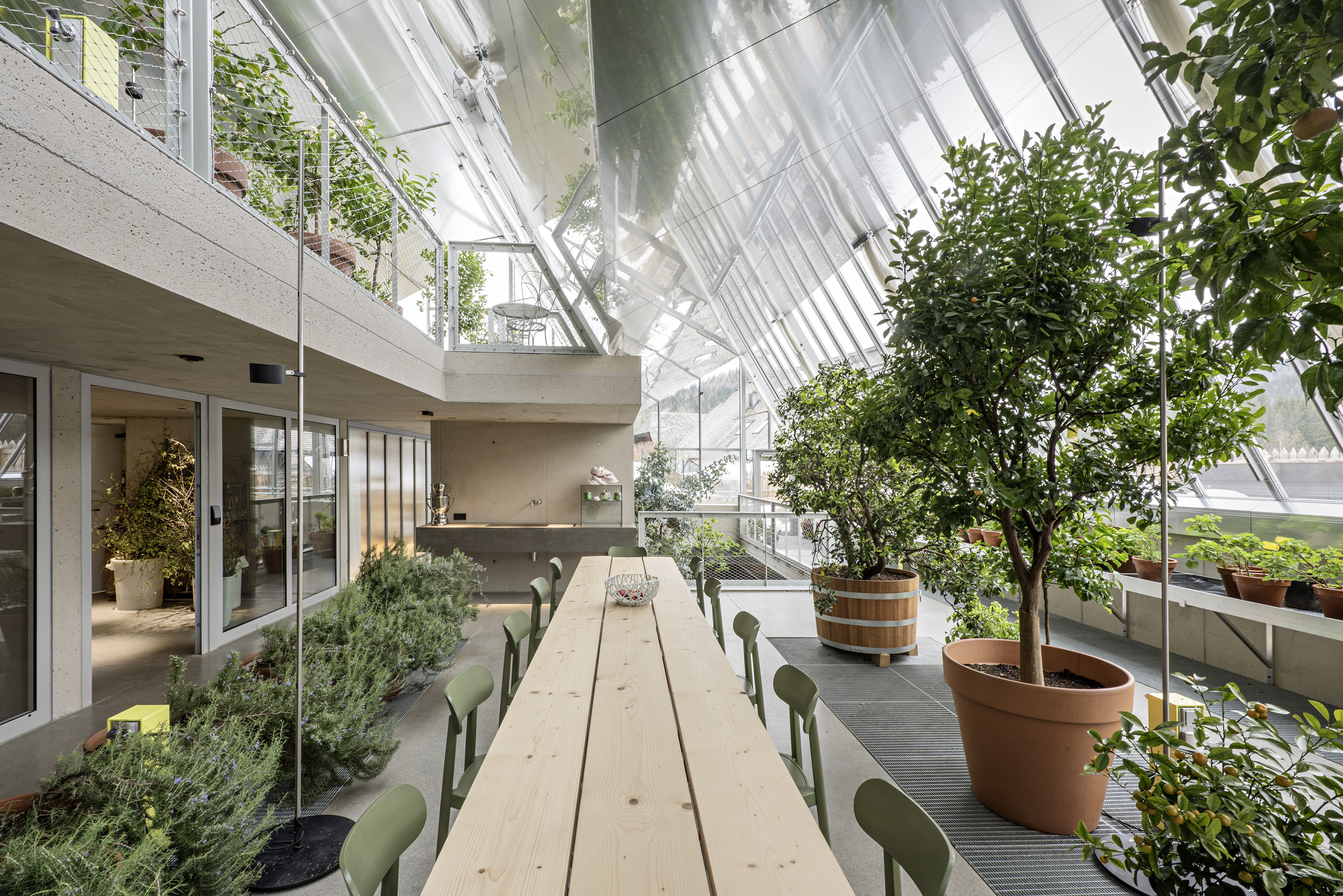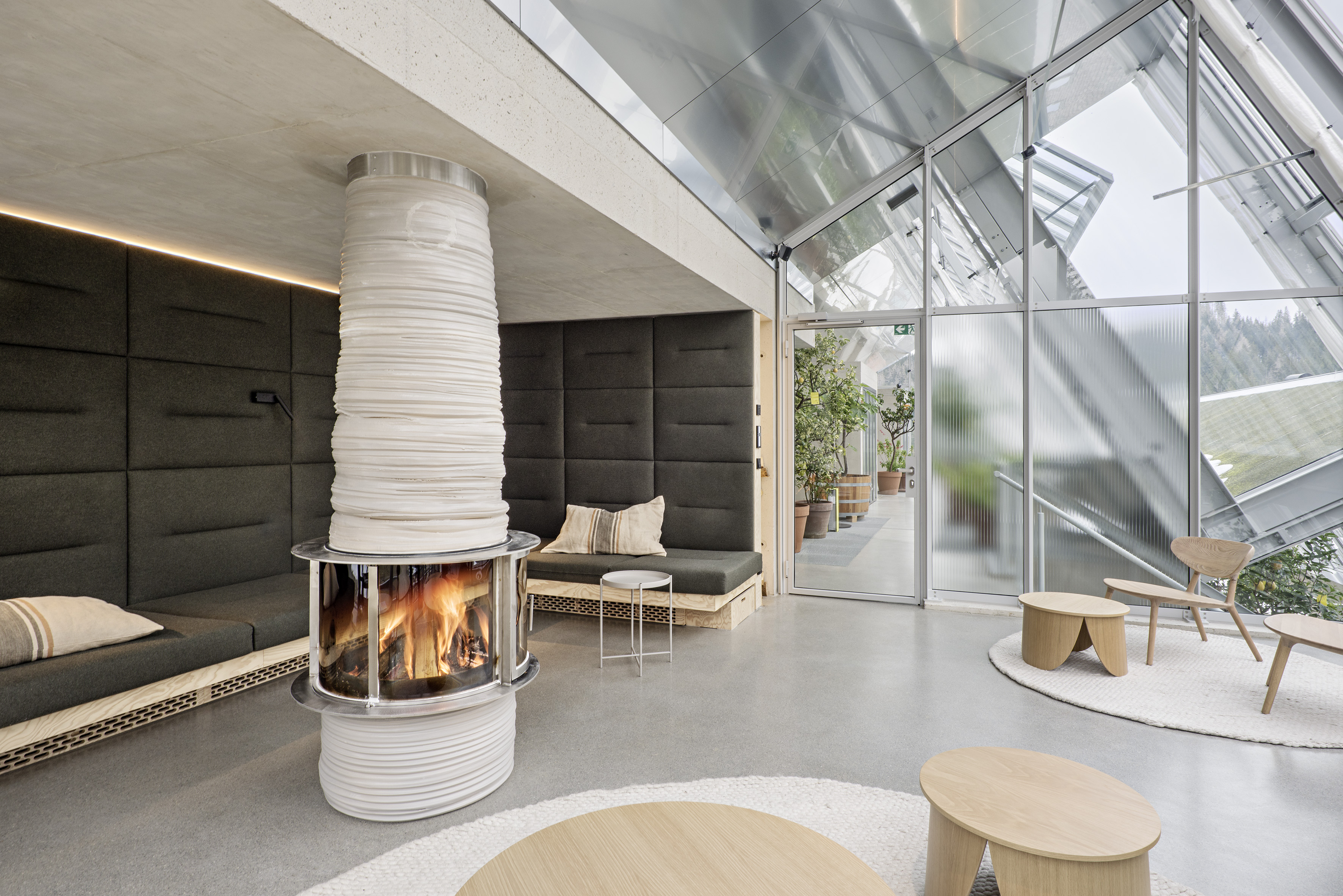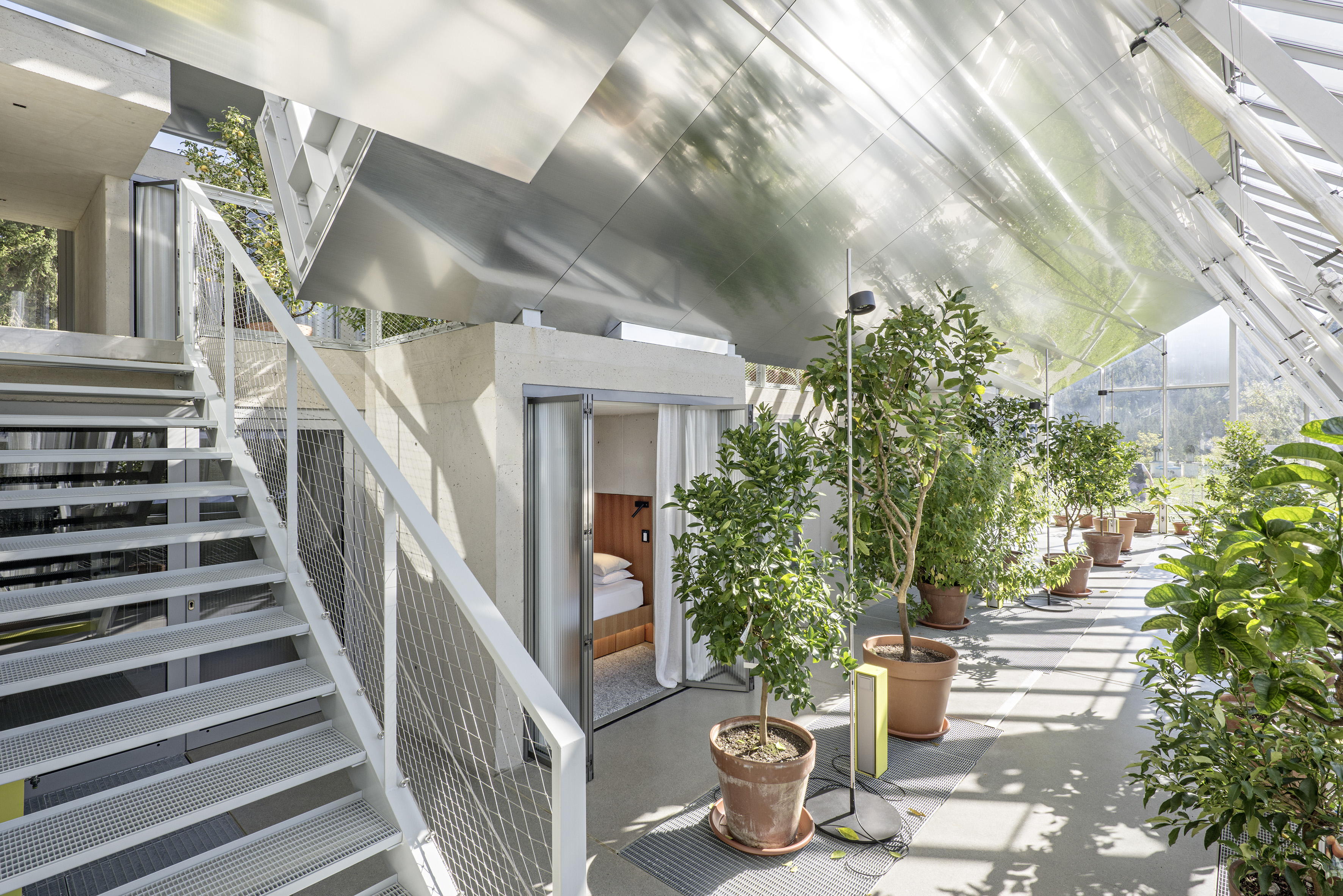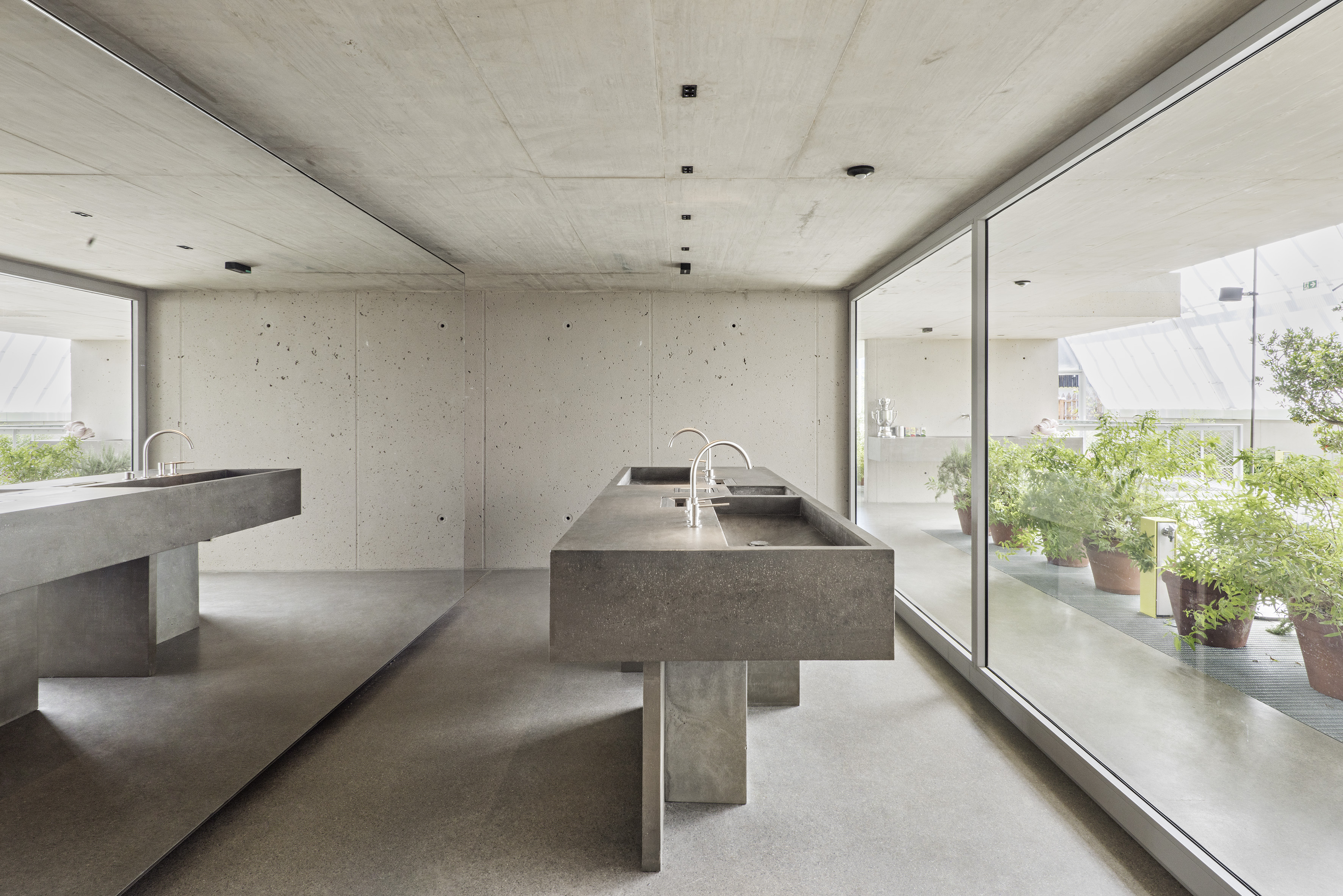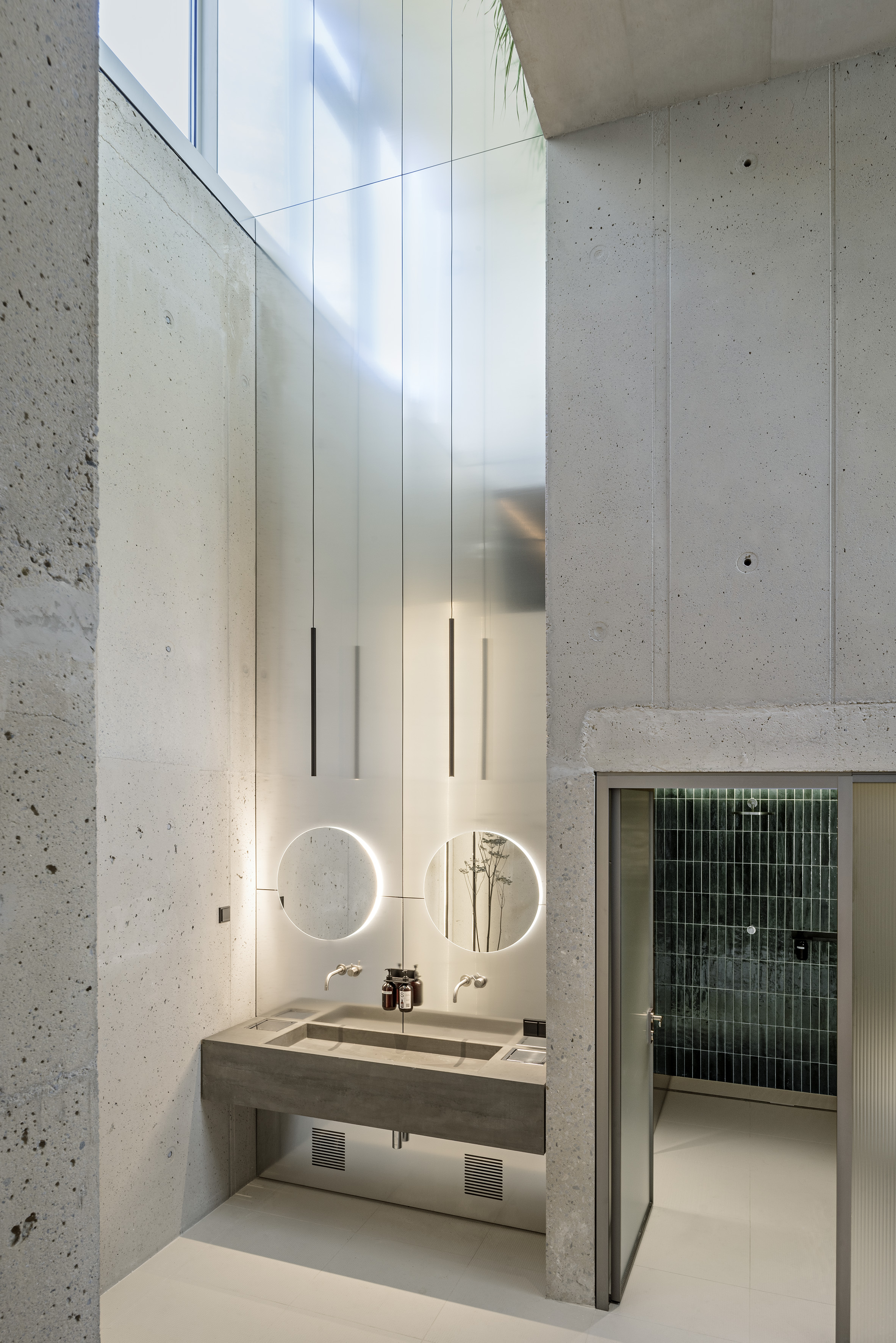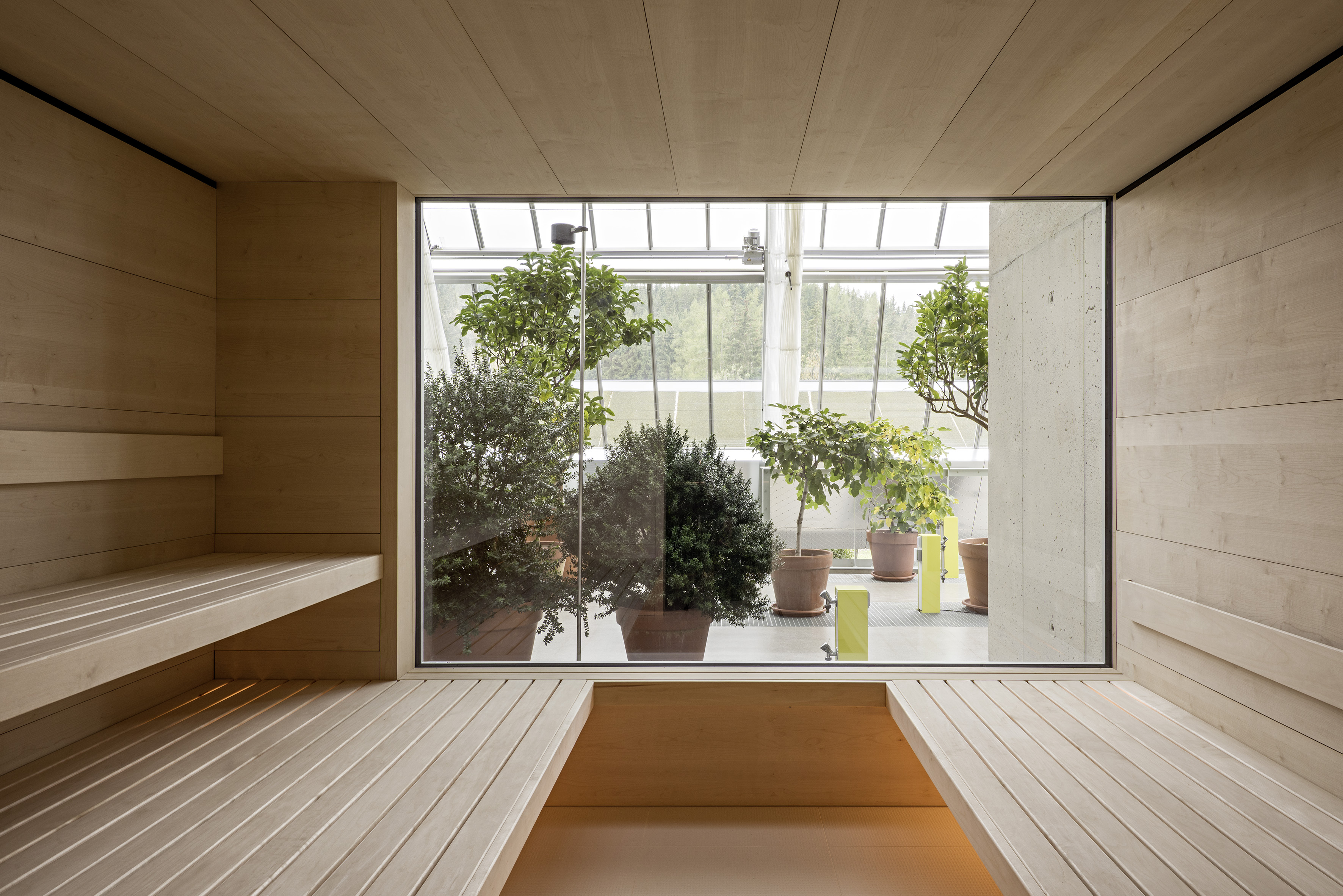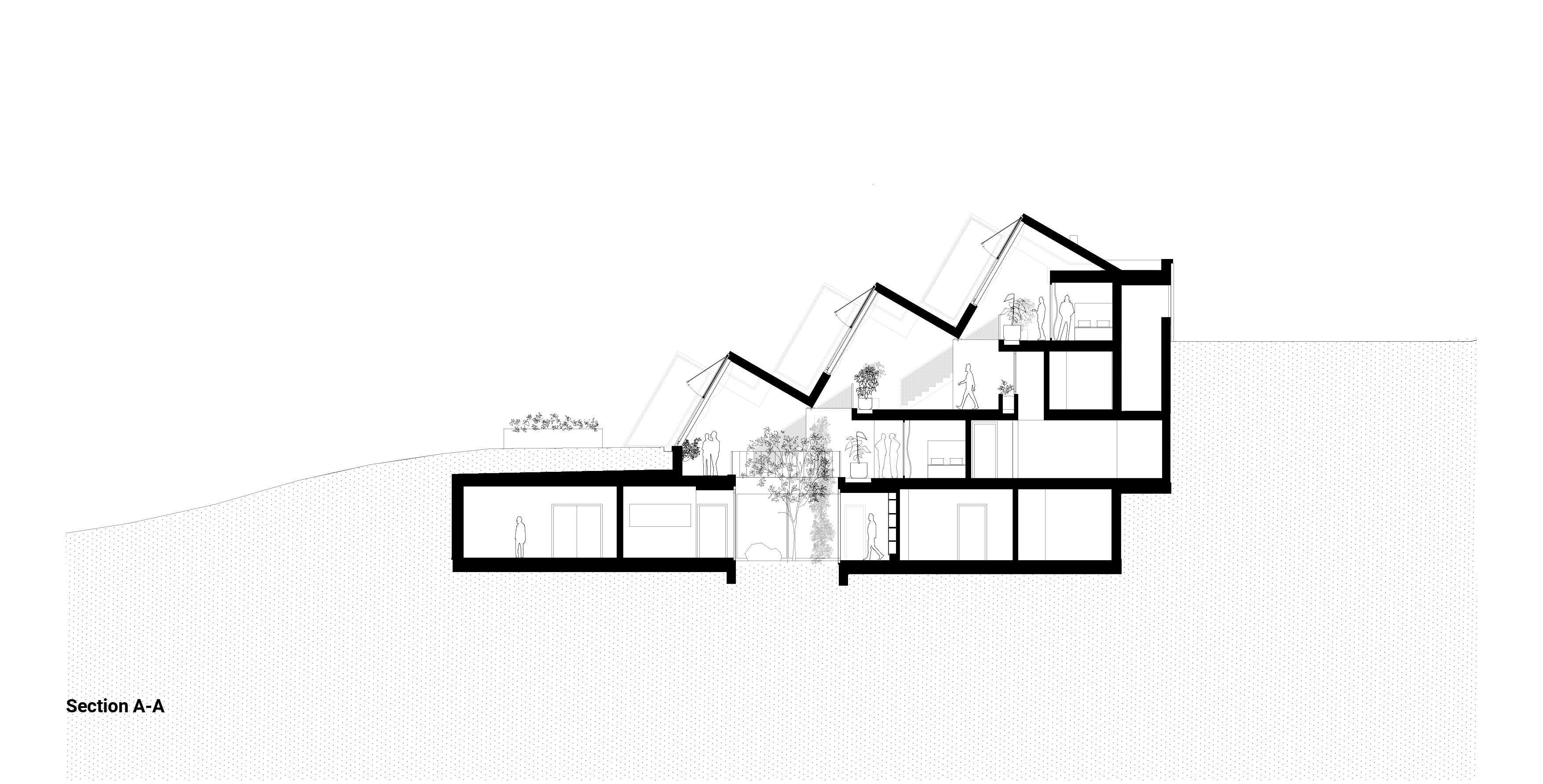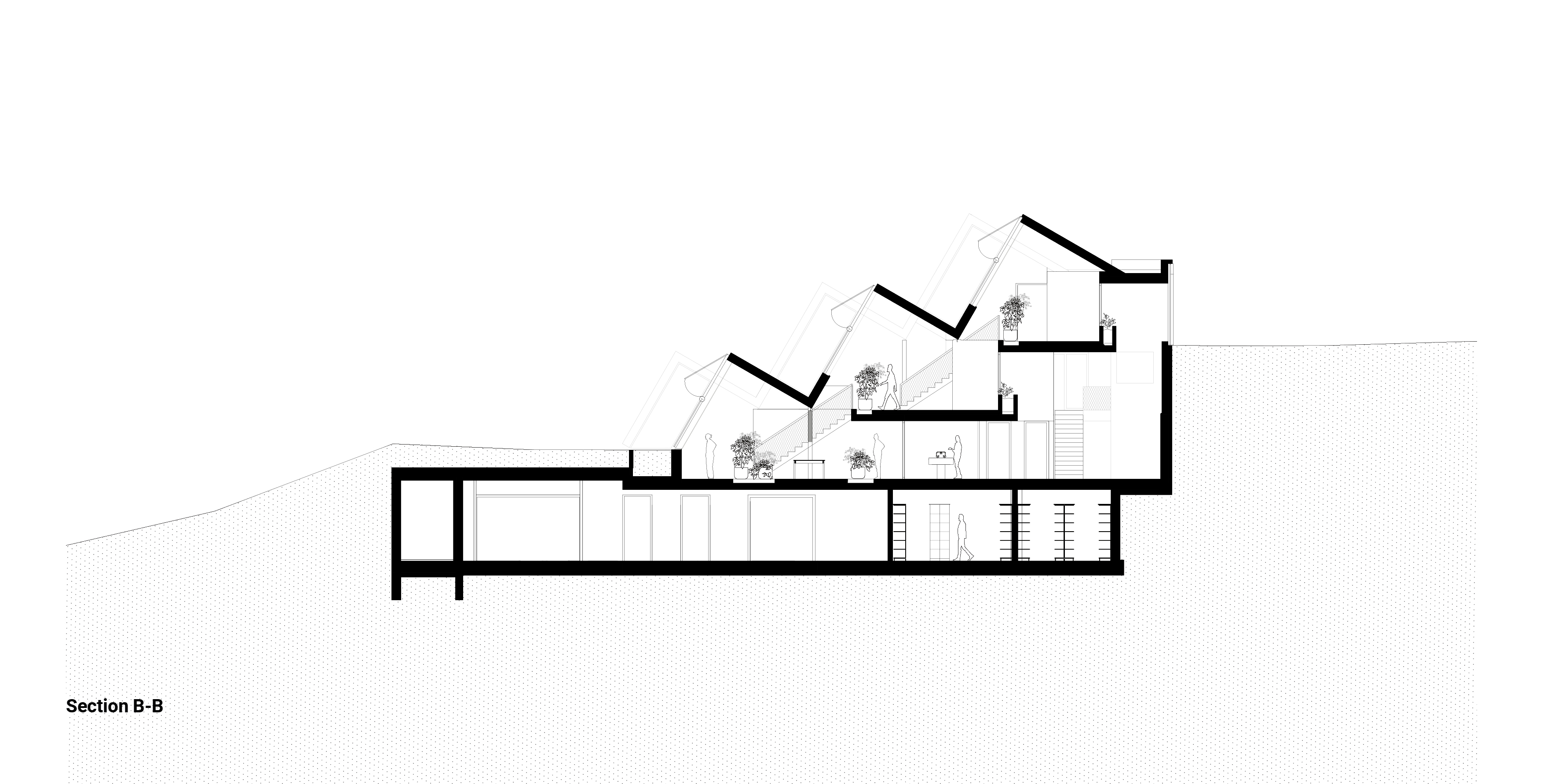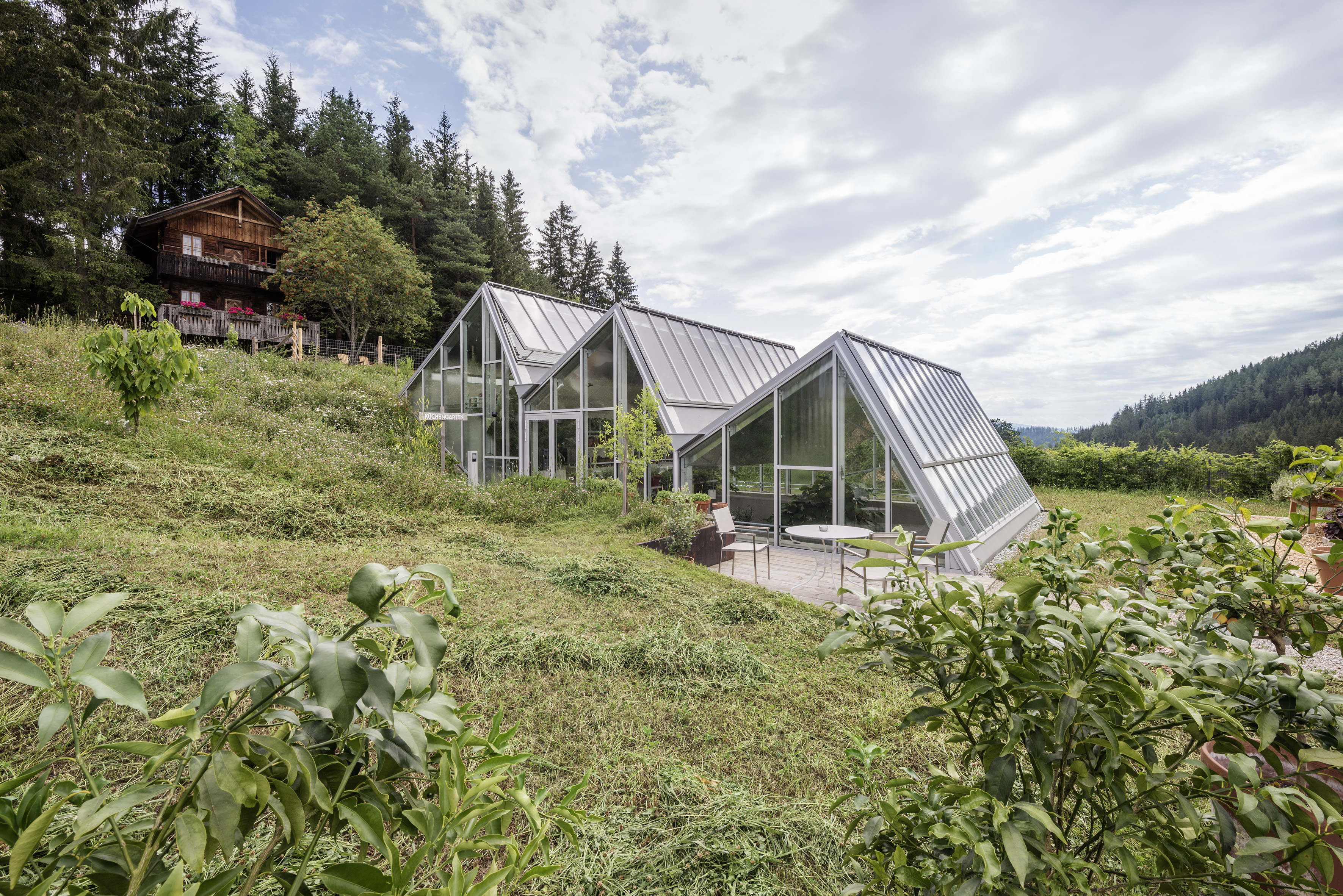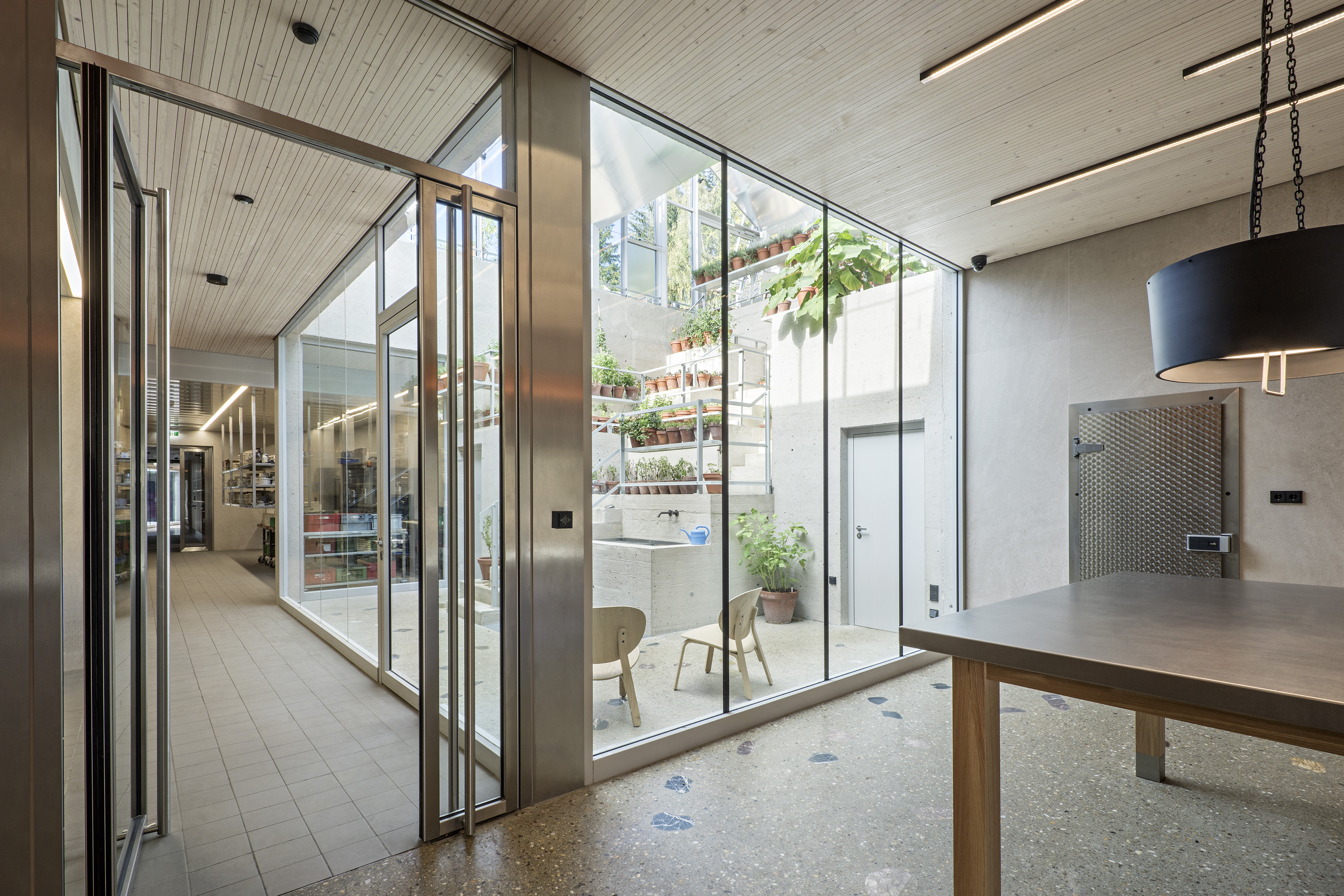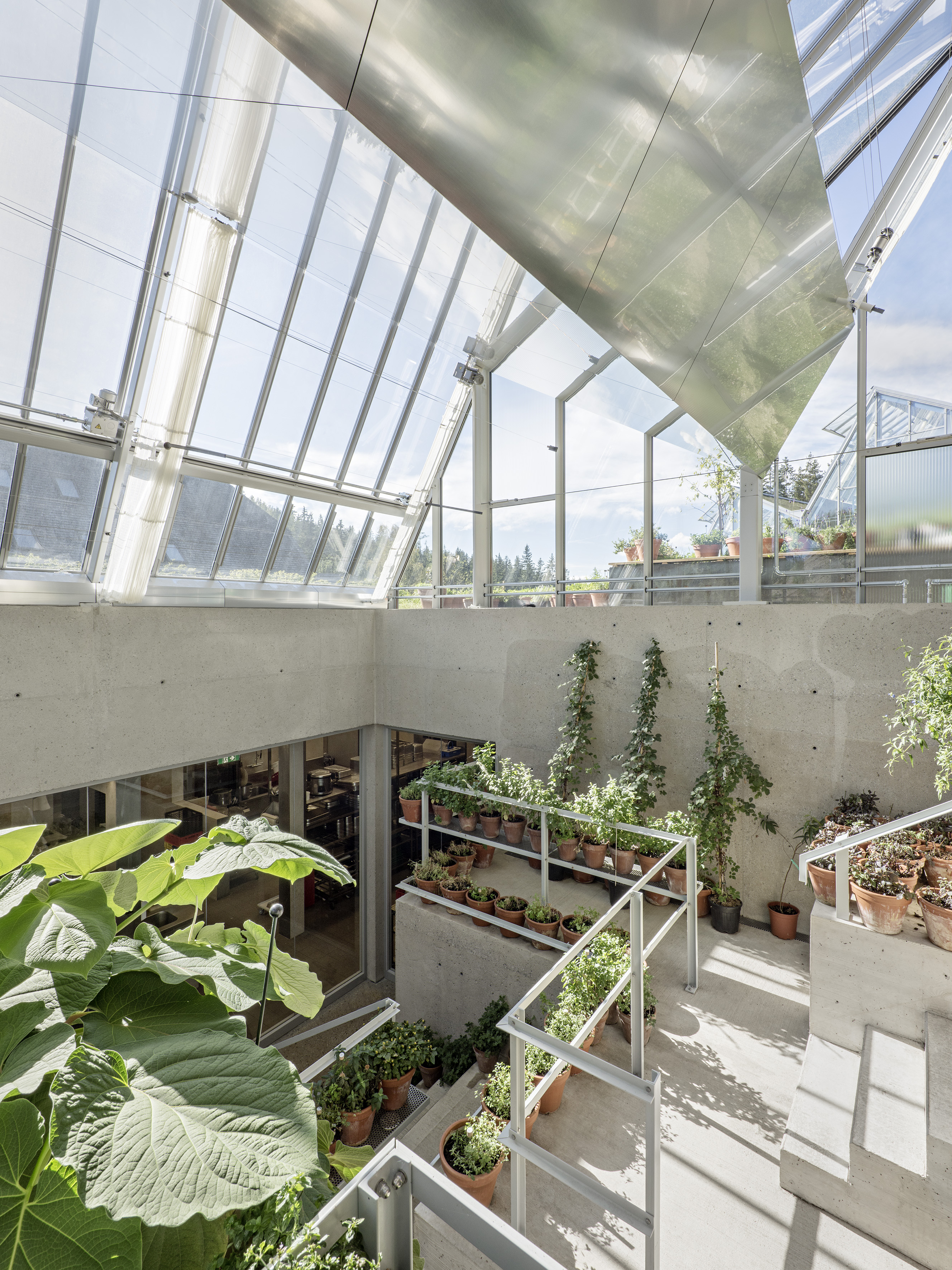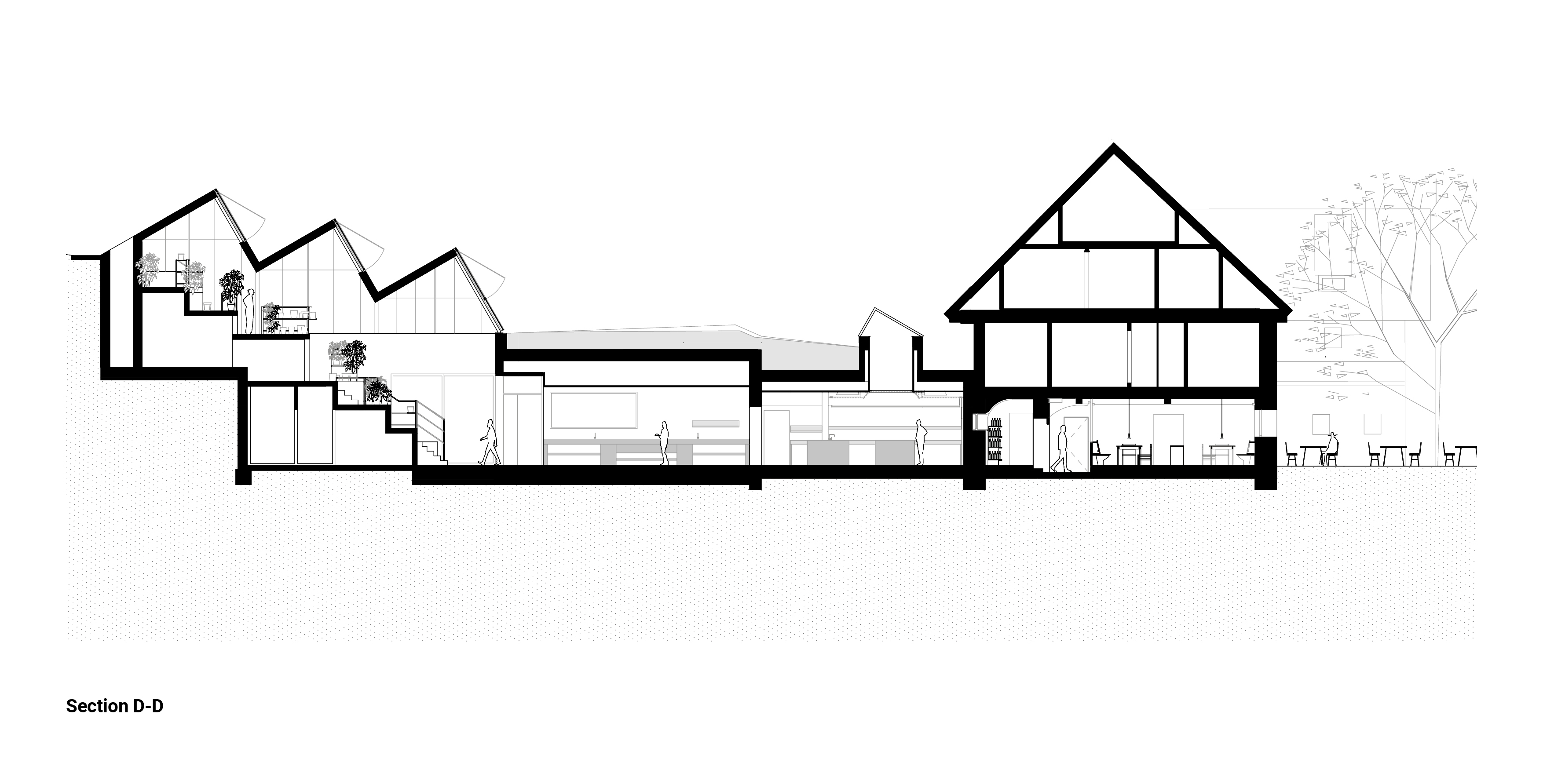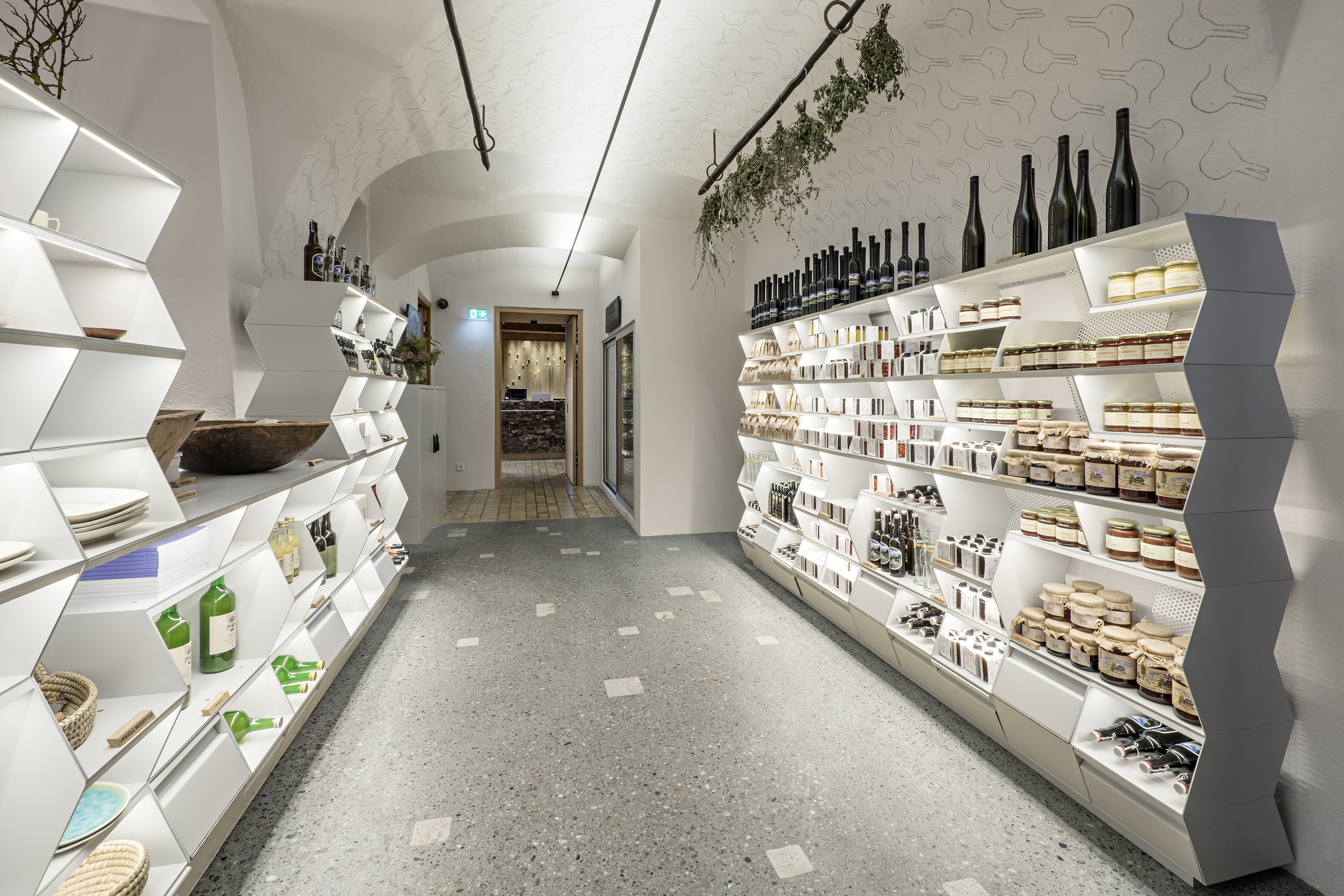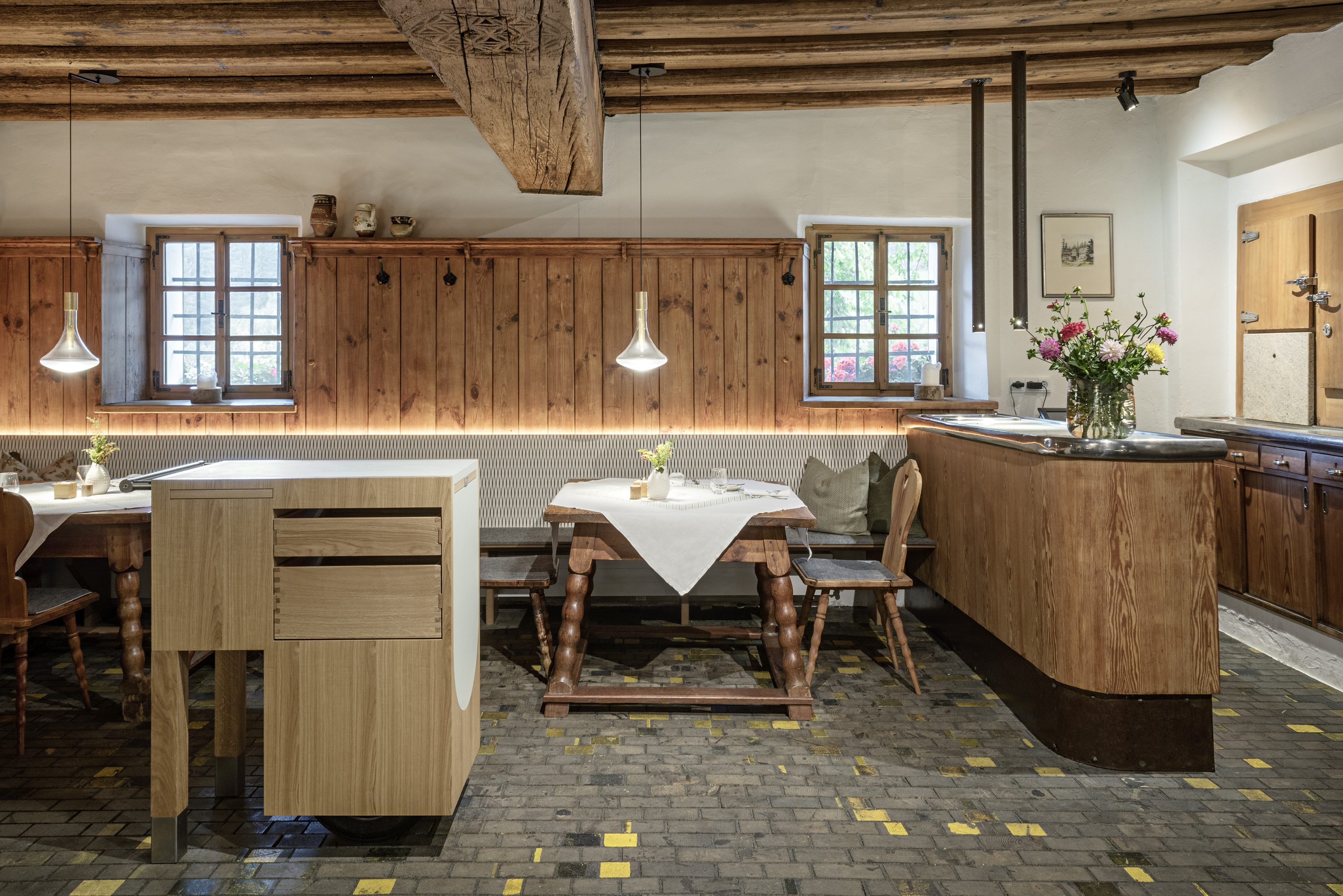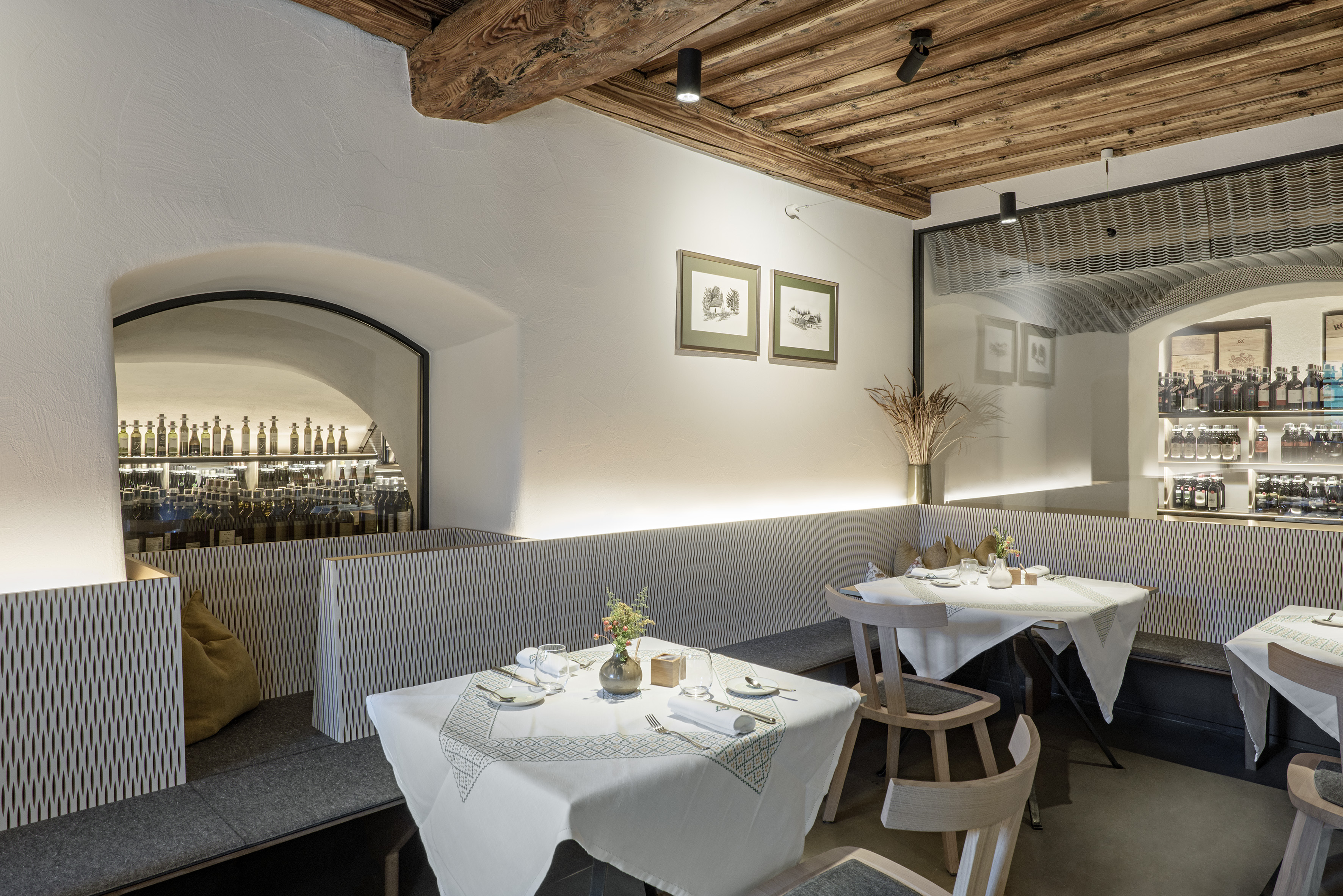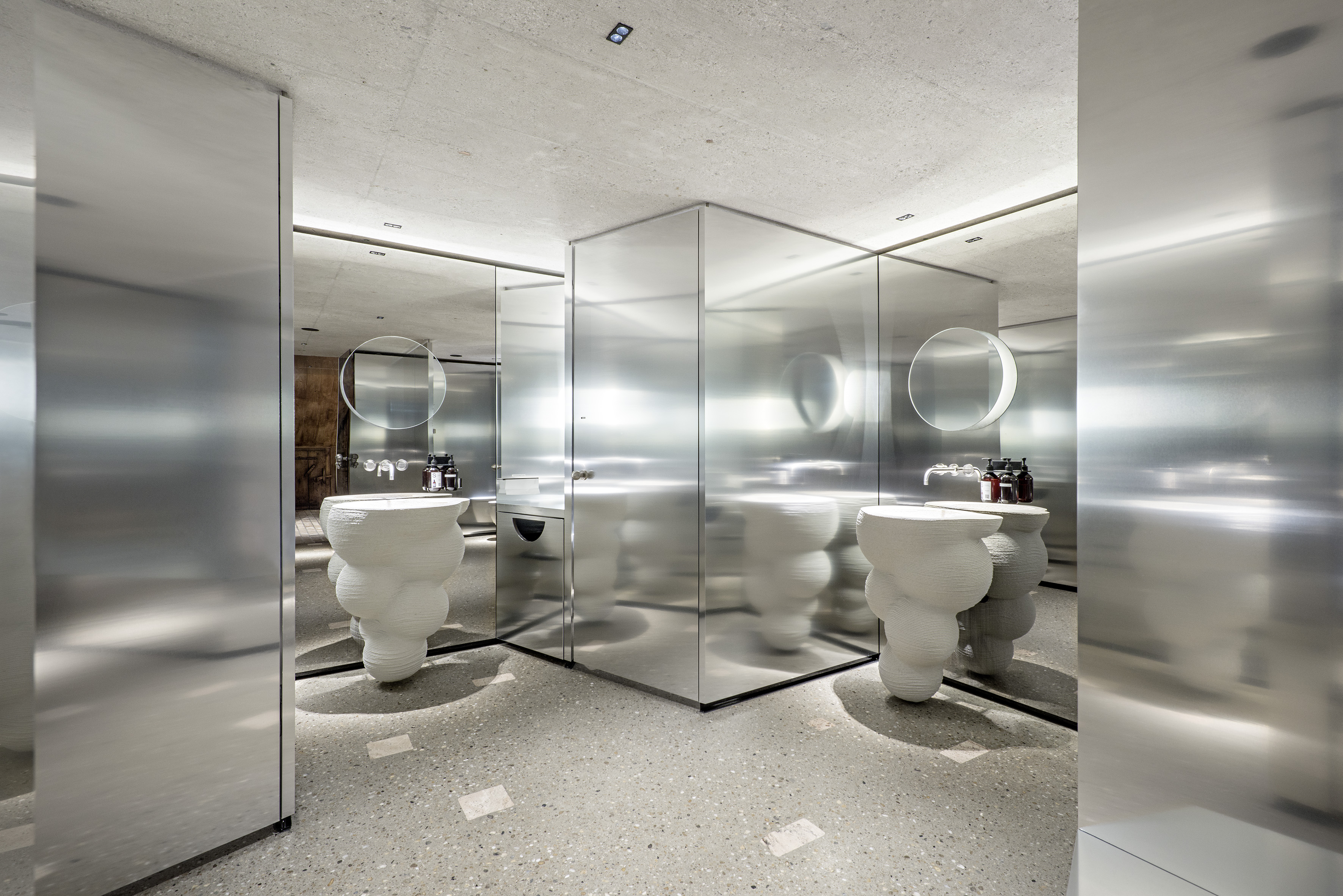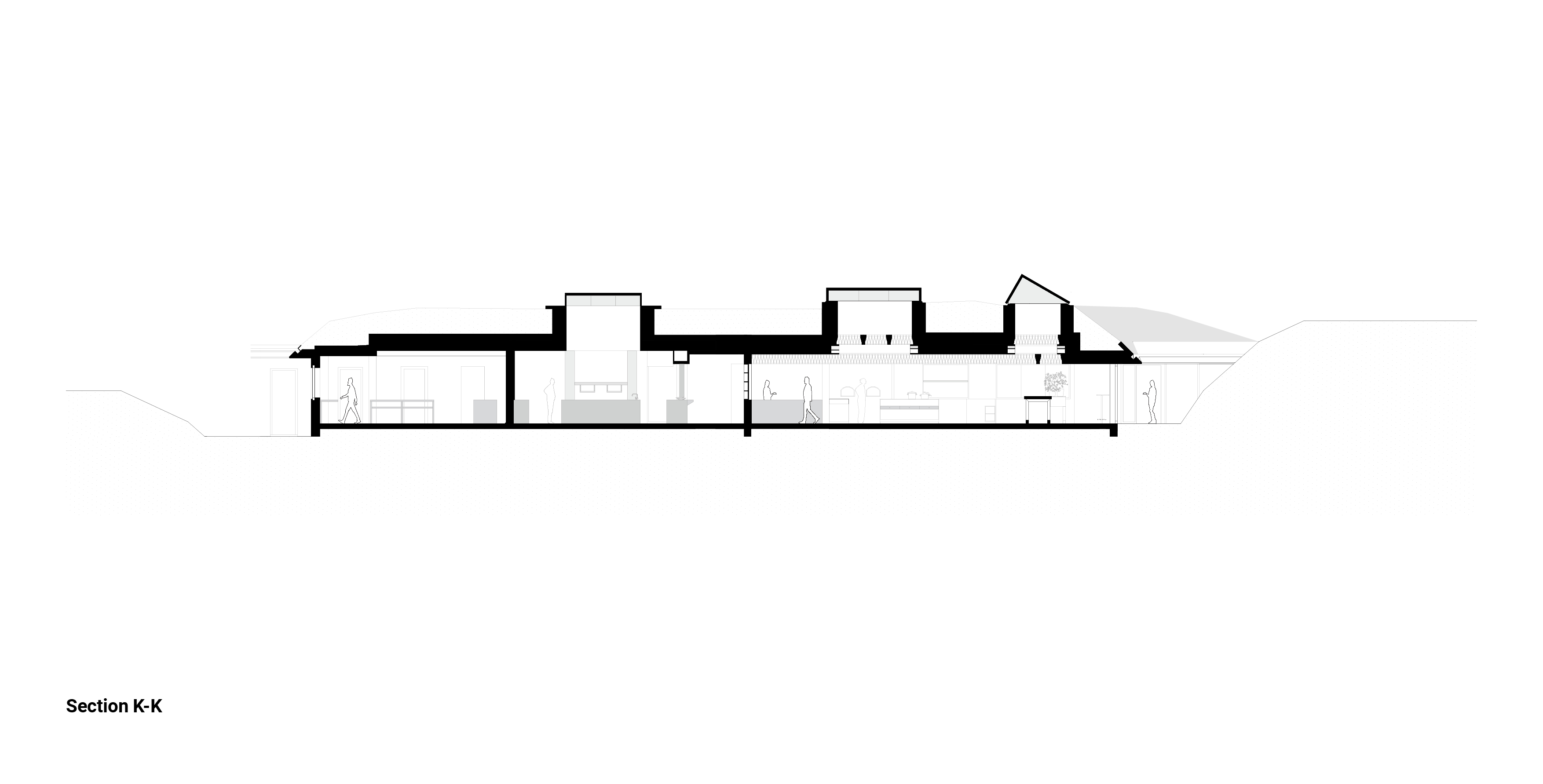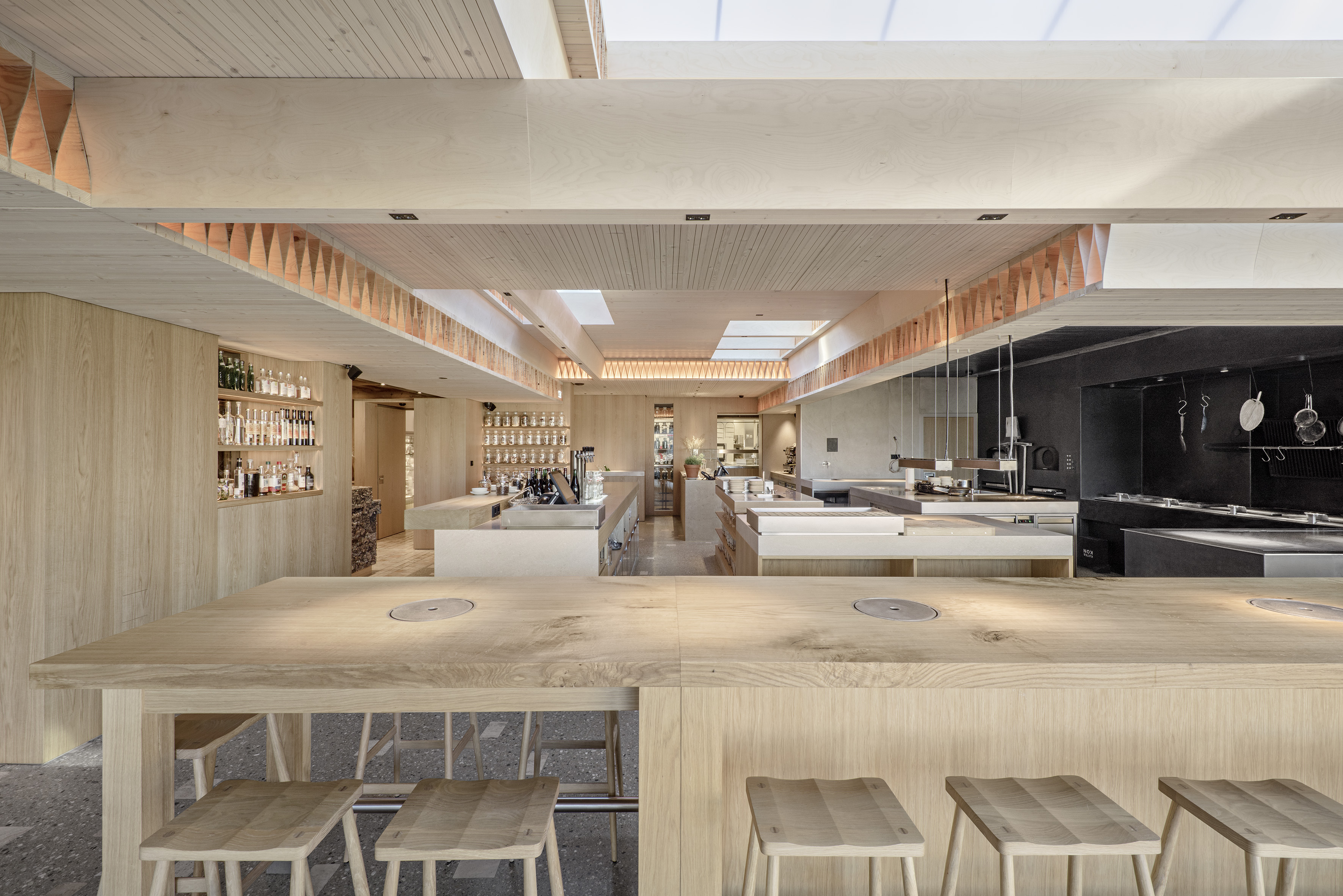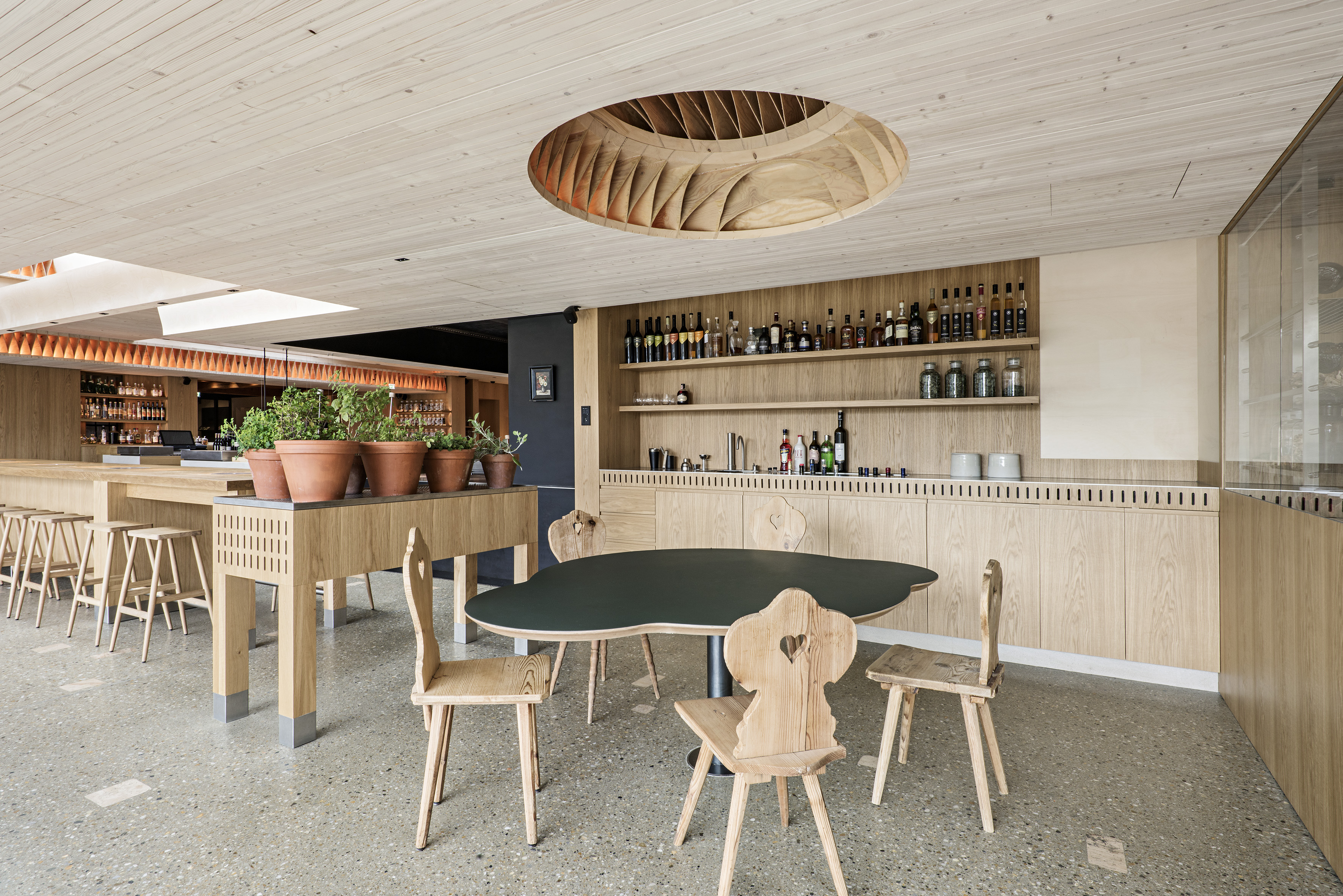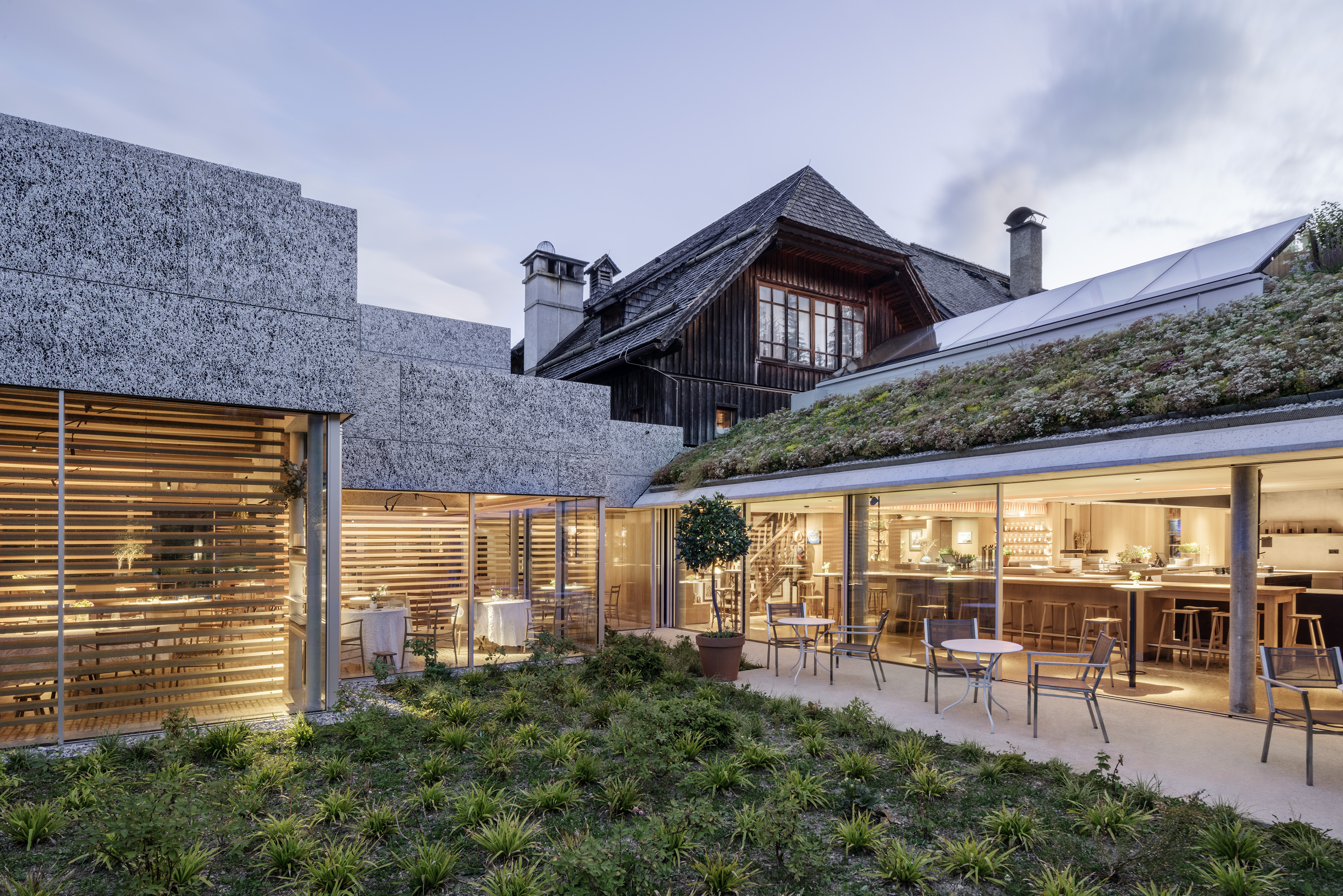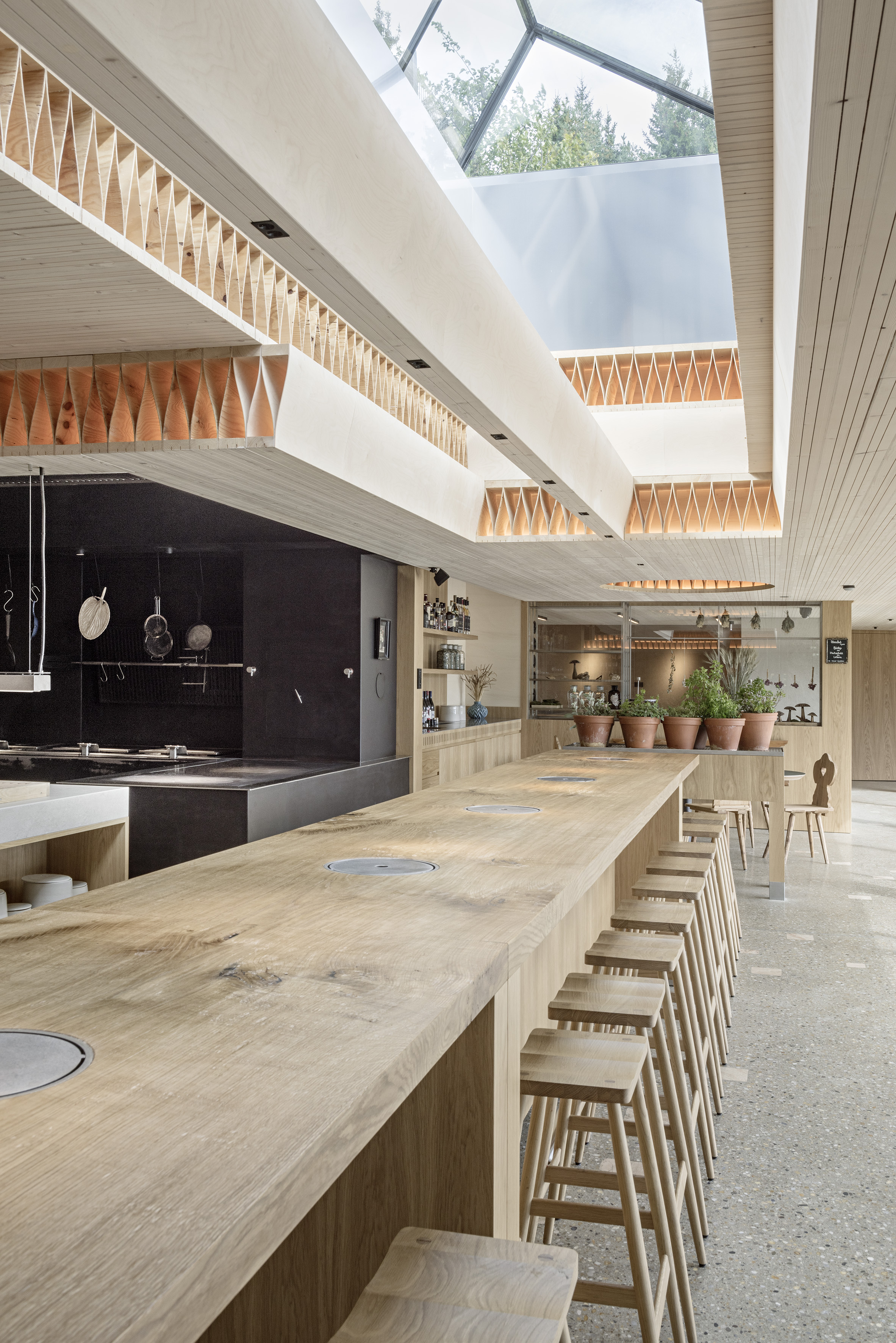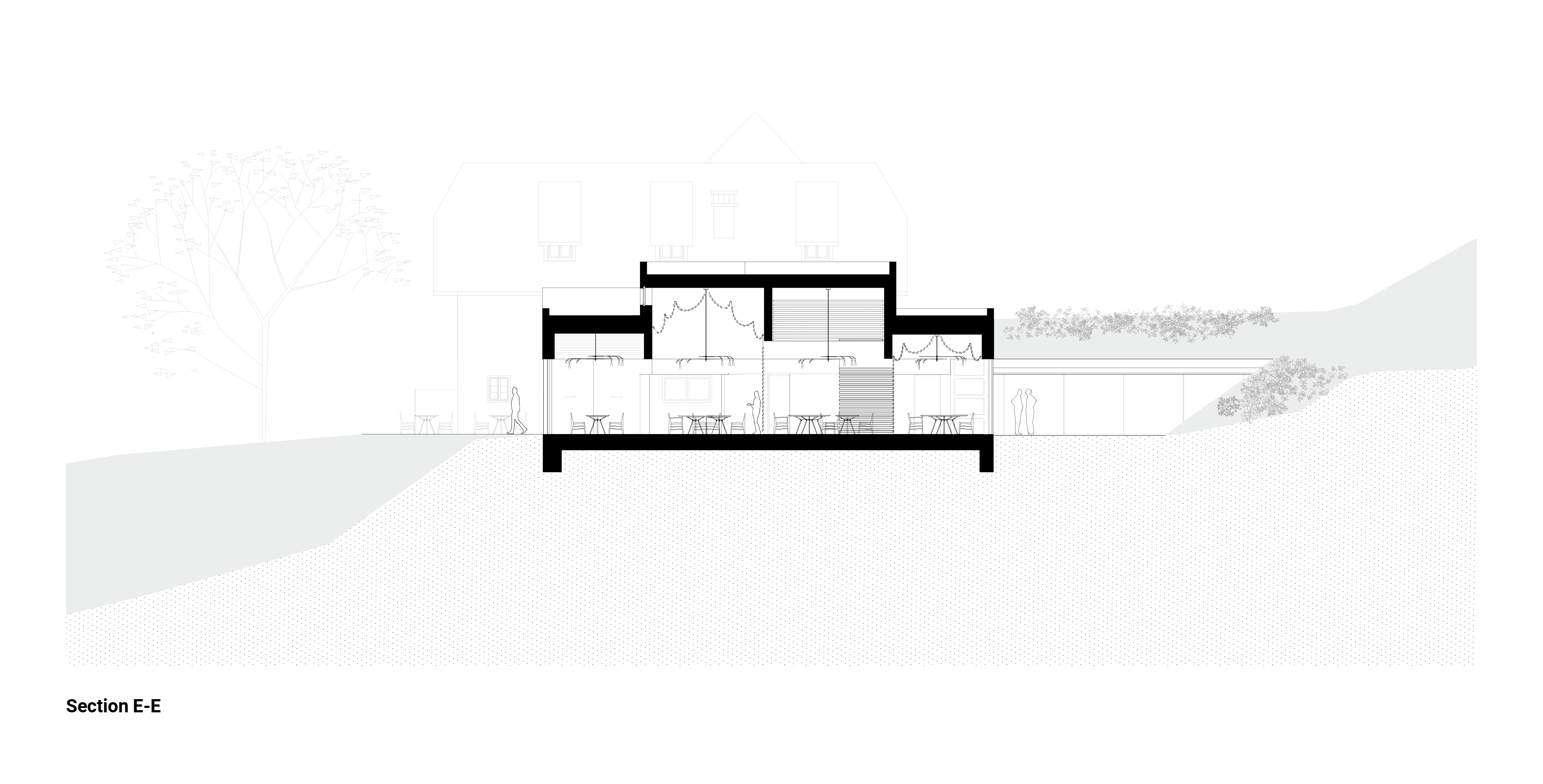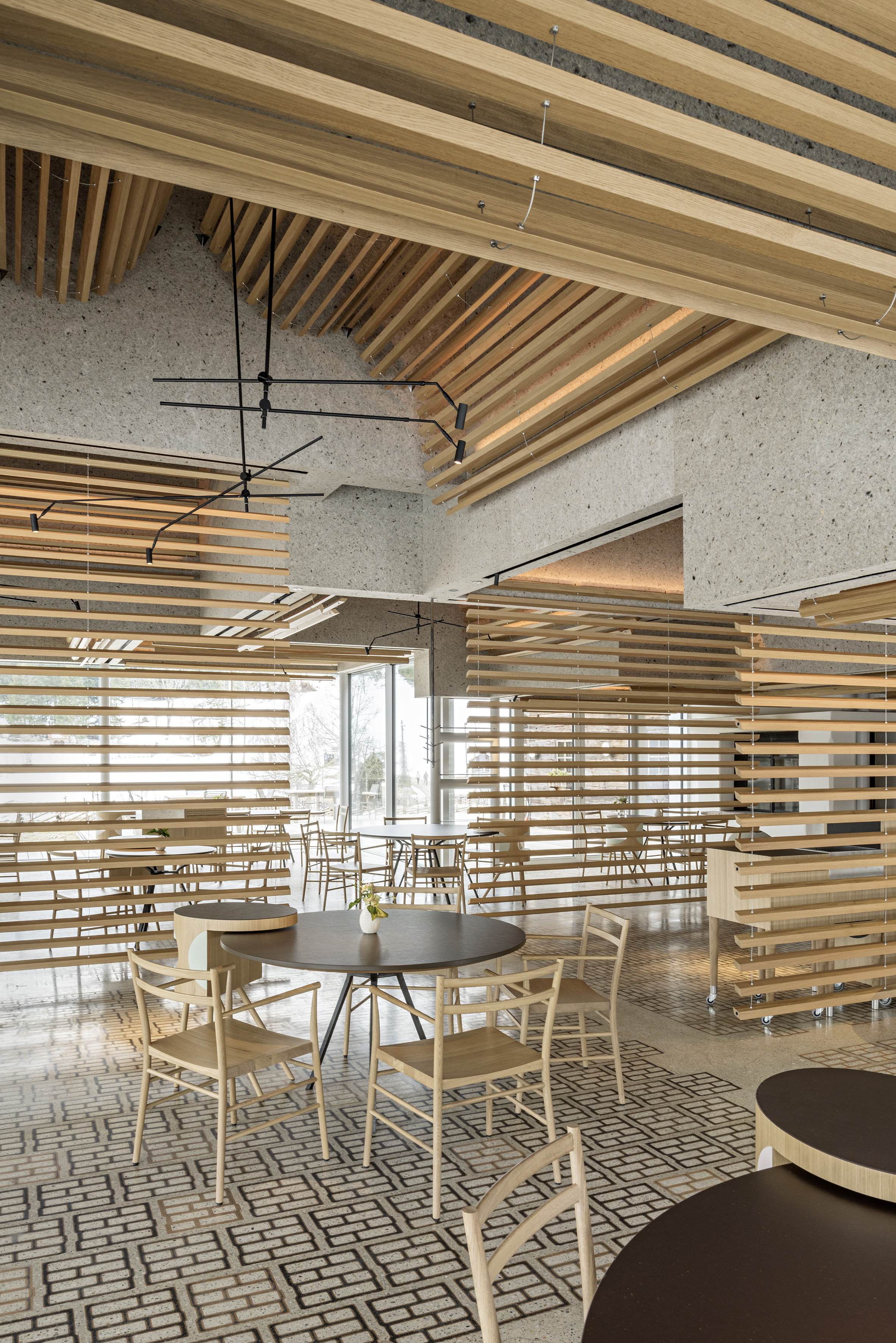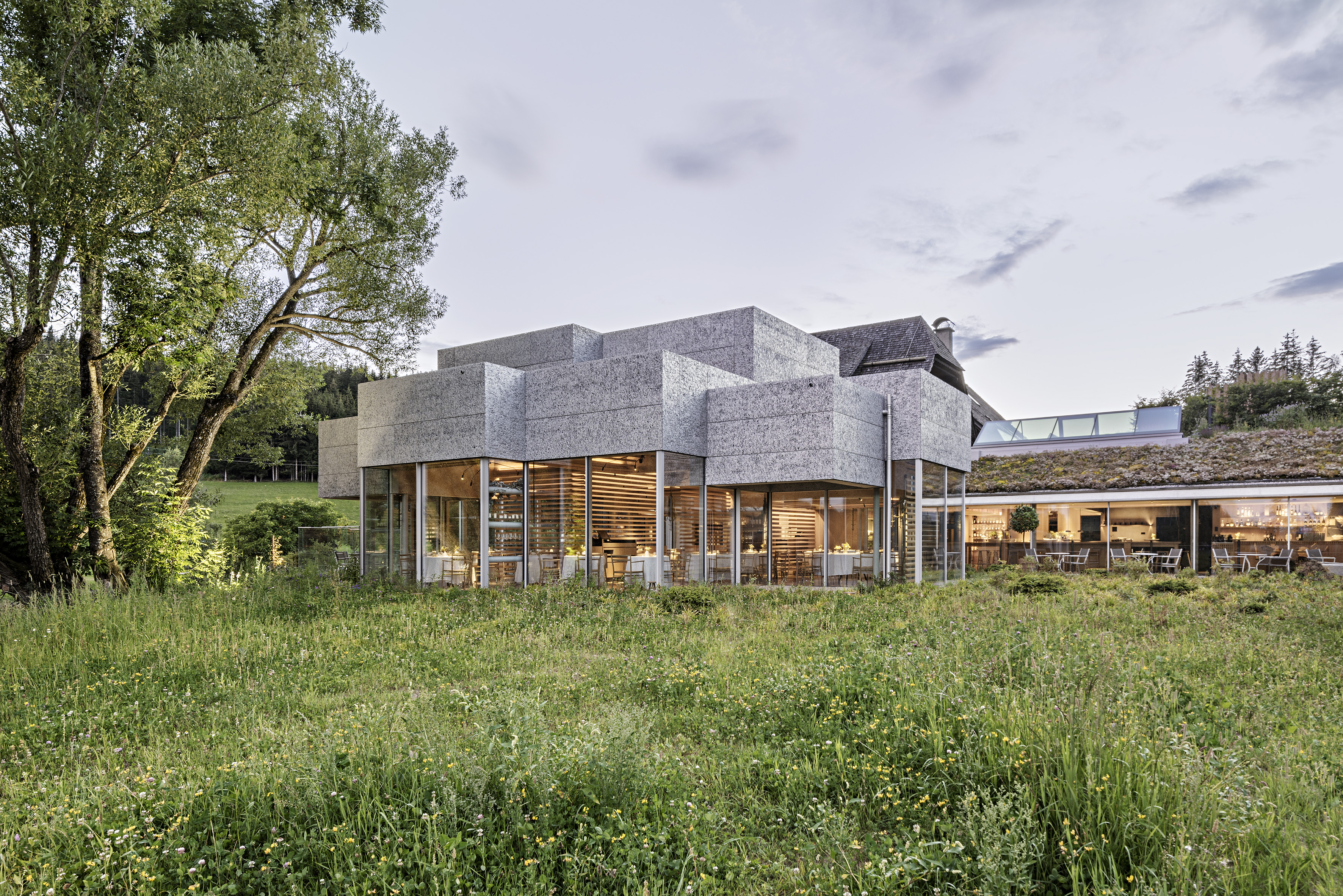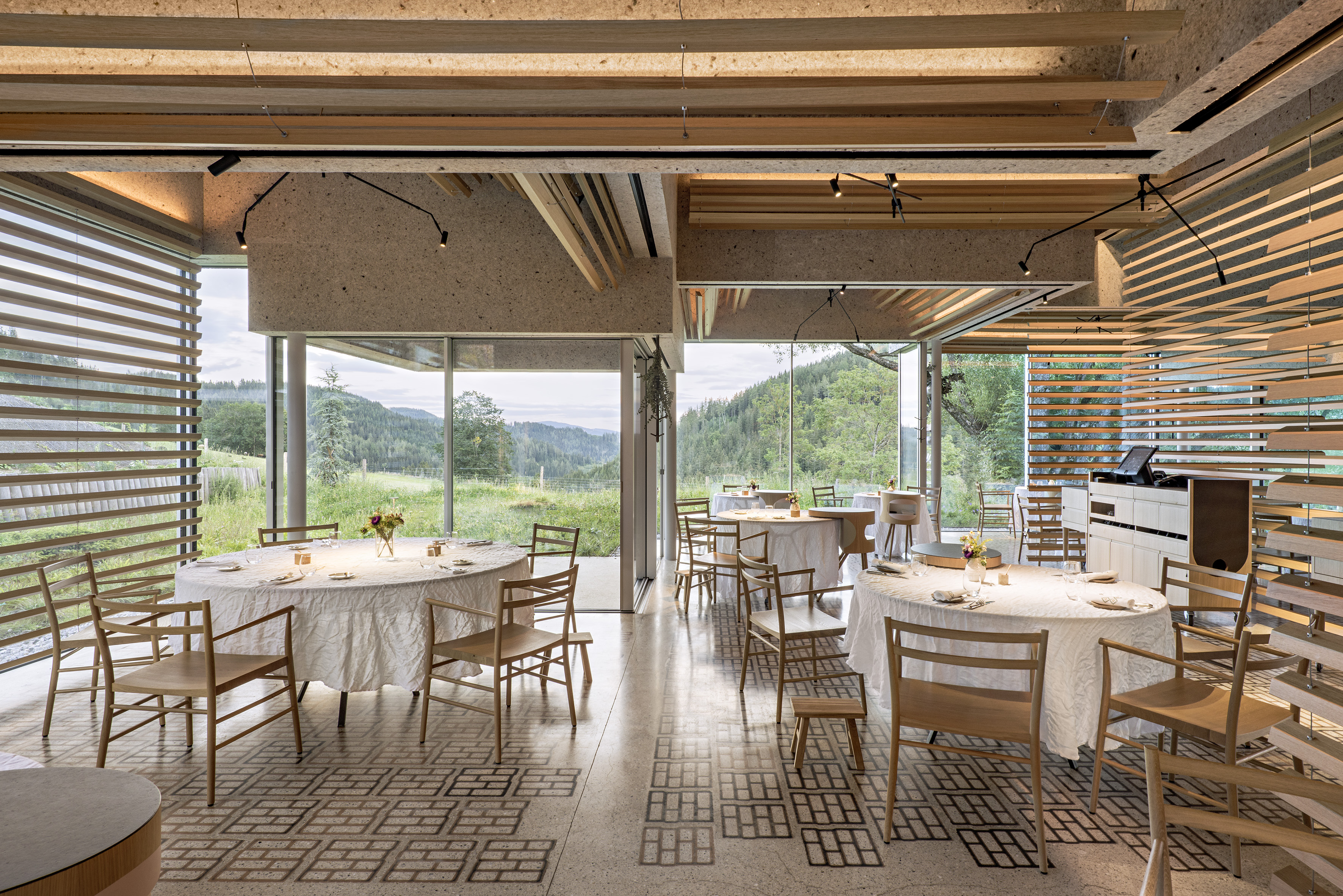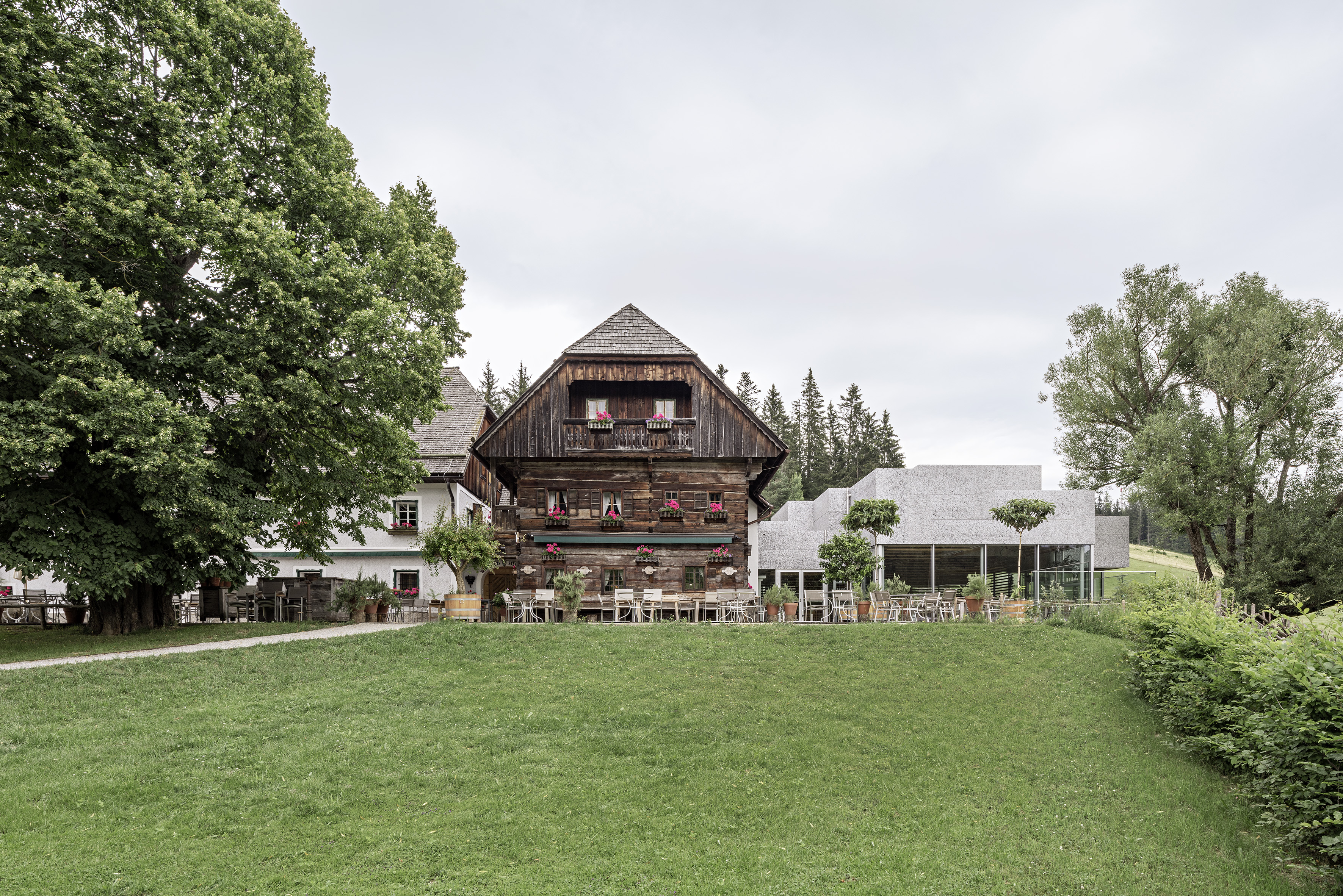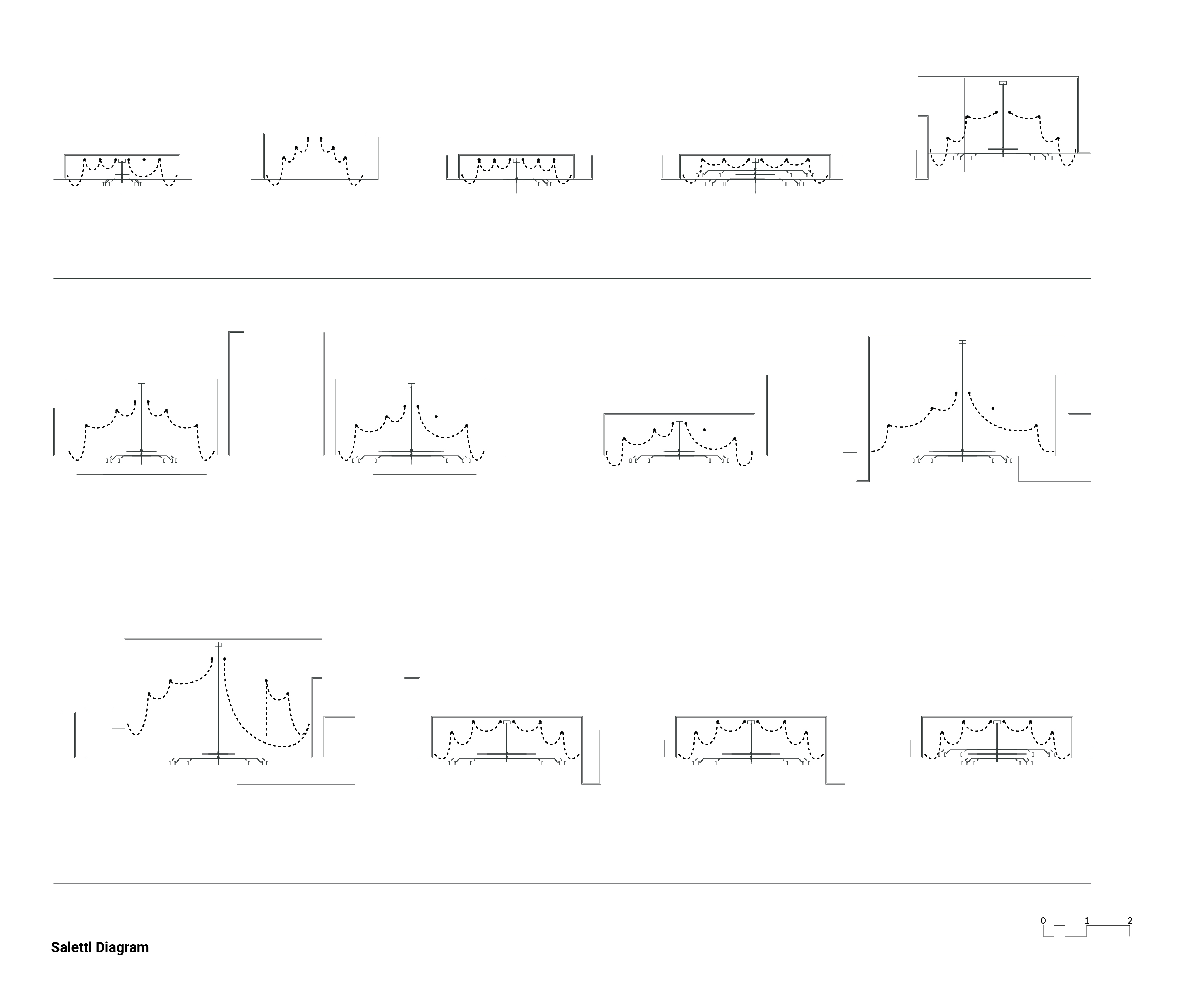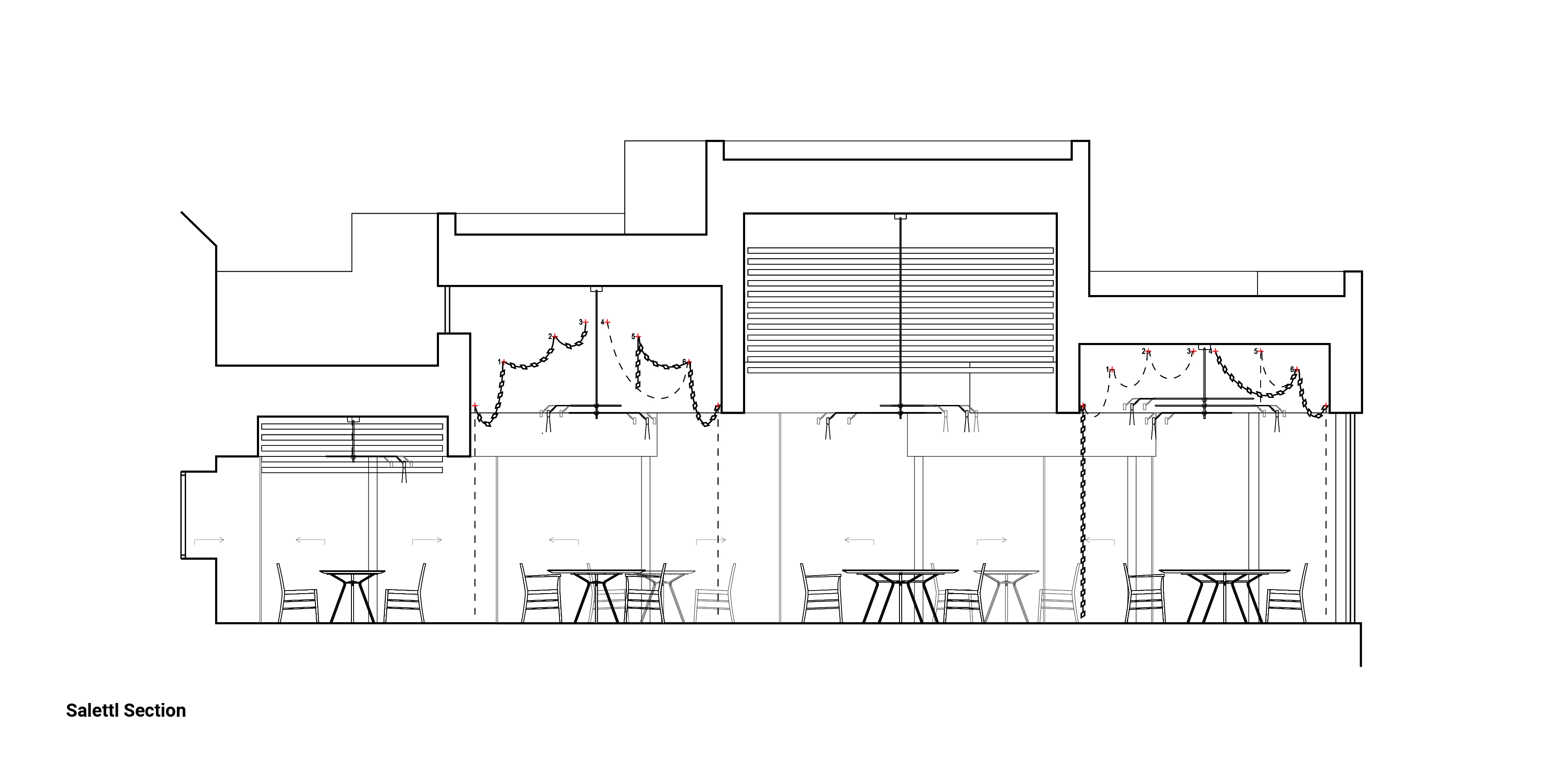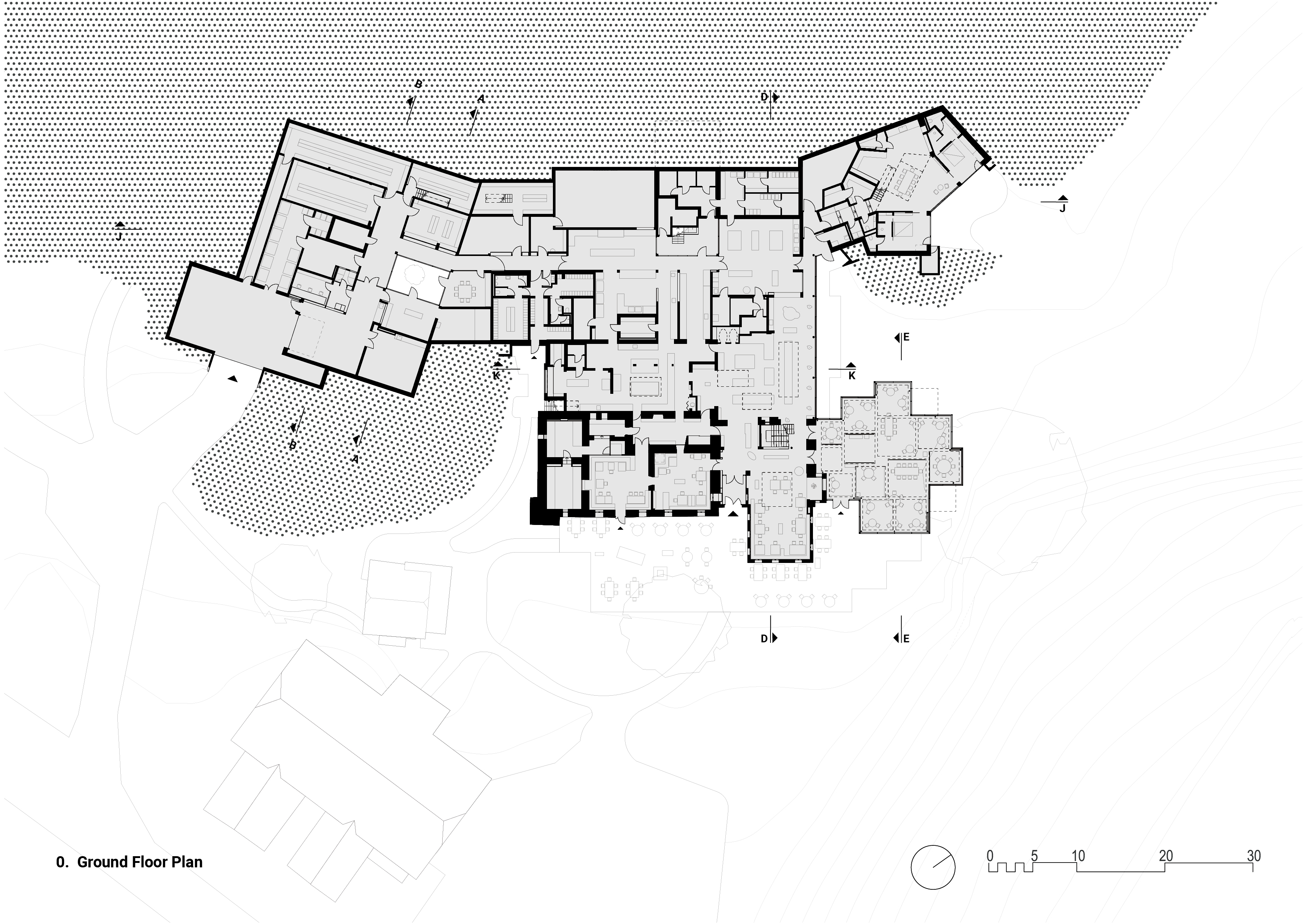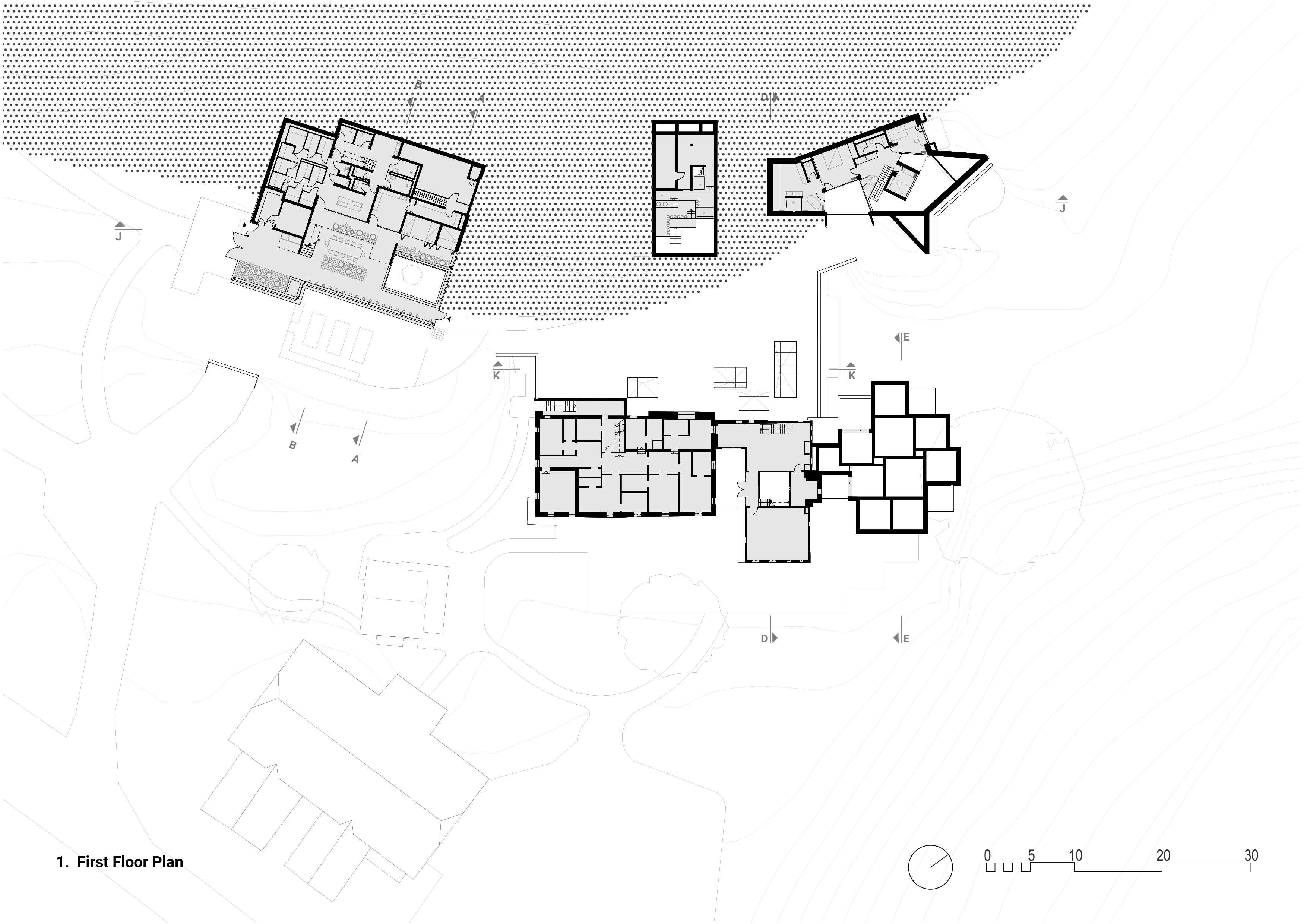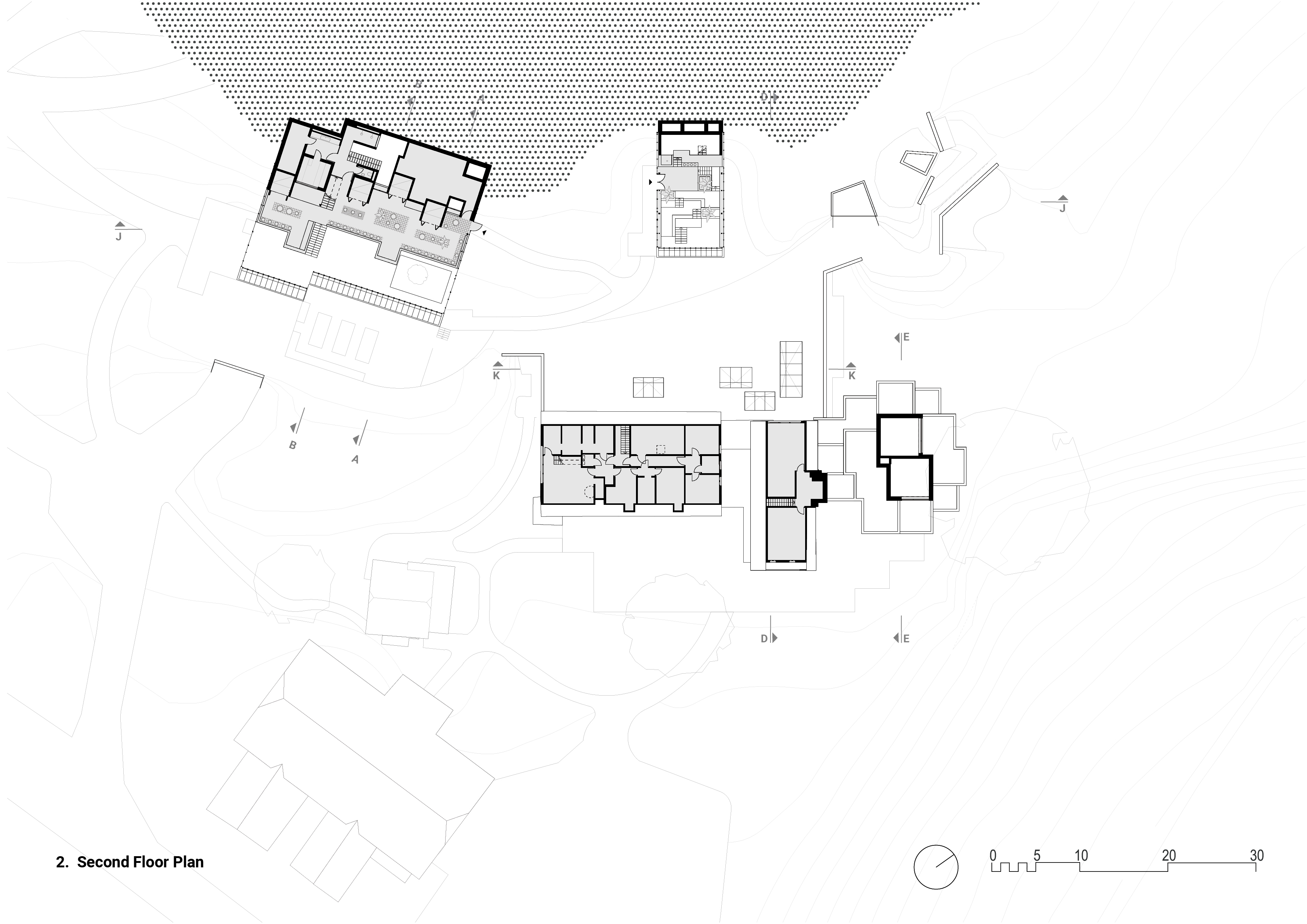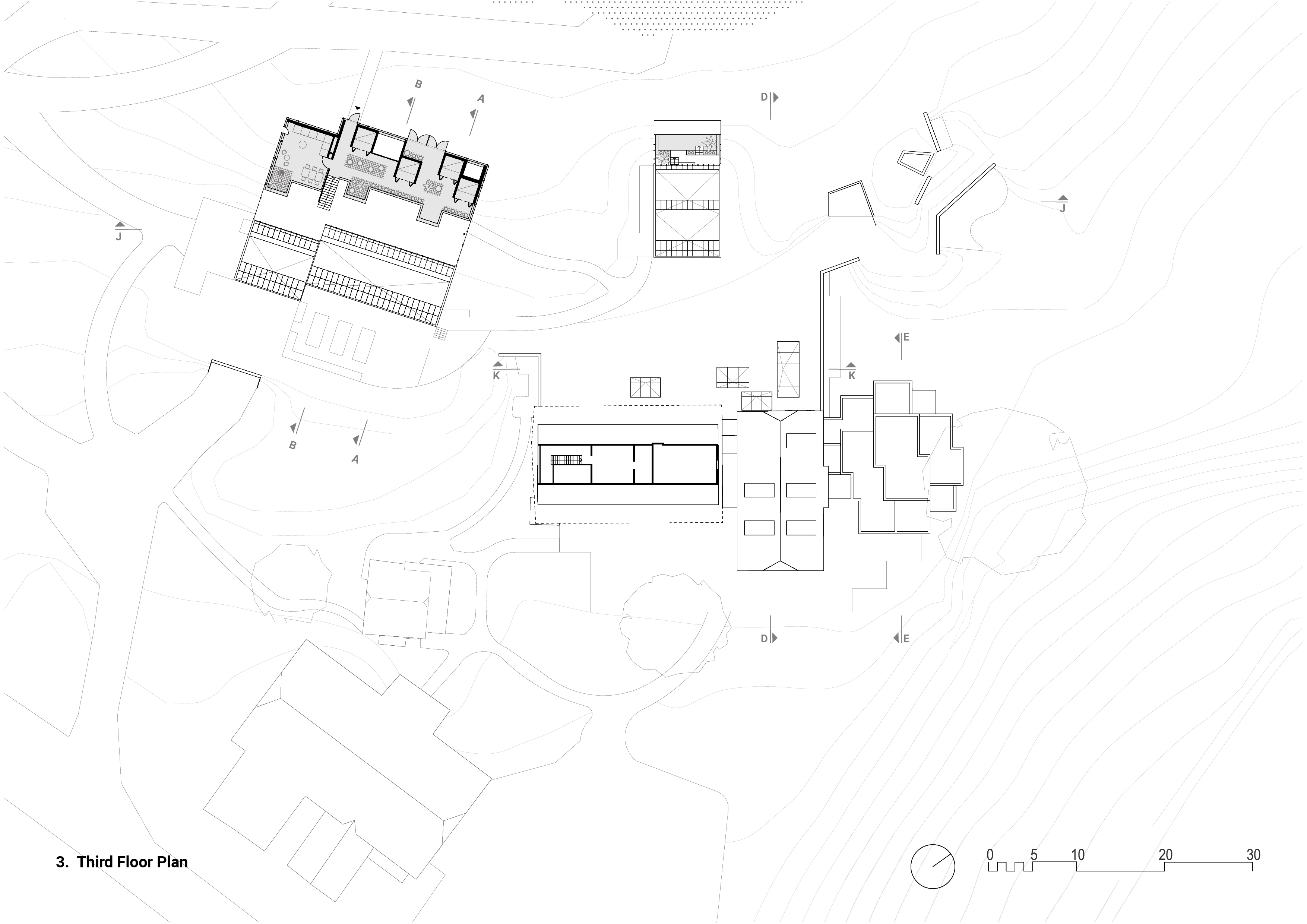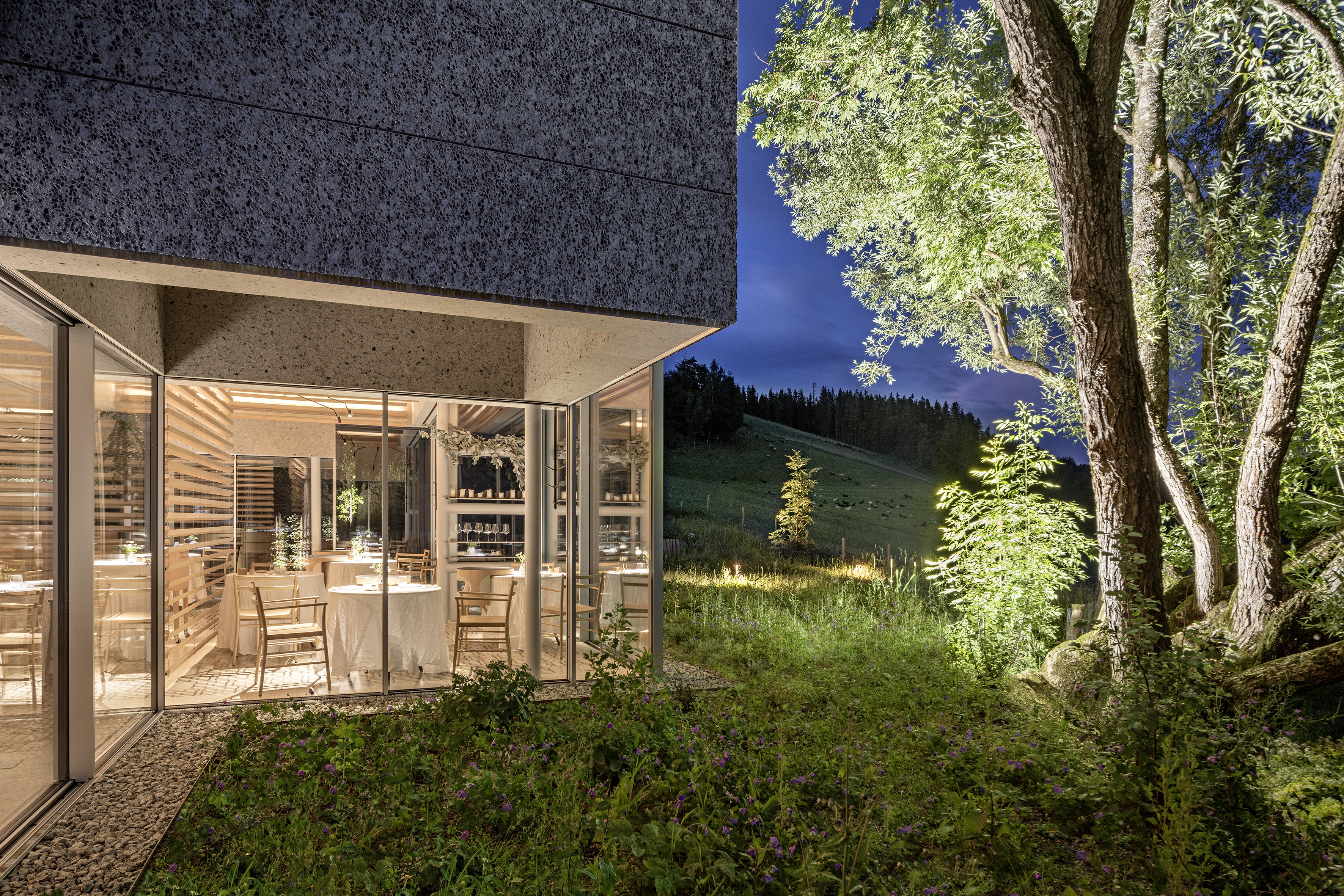Steirereck am Pogusch
Steirereck am Pogusch
Steirereck am Pogusch
Steirereck am Pogusch
| Year | 2022 | |
| Project Type | invited competition, 1st prize | |
| CLient | Steirereck Stadtpark GmbH | |
| Size | 3.700 m² | |
| Place | Pogusch, Styria | |
| Project Team | Anna Popelka, Georg Poduschka, Paul Fürst, Lukas Ortner, Christian Wegerer, Jakub Dvorak, Billie Murphy, Jonas Steinmetz, Maximilian Keil | |
| Excerpt | Rural areas are developing in line with the times. At the Pogusch in the Austrian Alps, Birgit and Heinz Reitbauer prove this at an altitude of 1050 m: PPAG architects, the minds behind the extension of the Steirereck restaurant in Vienna's Stadtpark in 2015, also won the competition for the new formation of the Steirereck am Pogusch in 2018. The extensive construction project was completed in spring 2022. The complex now includes a farm, a biomass power plant, as well as hospitality and gastronomy of the highest standard. PPAG architects are responsible for completely renewed structures in the inn and kitchen, a new gazebo and two unconventional glass houses (with a garden for rare plants as kitchen hinterland, overnight accommodation in cabanes and a multi-storey spa). The realization, in collaboration with the best handicraft companies, allowed for a nowadays unusual level of detail |
>>View Project
The inn and upscale restaurant Steirereck am Pogusch in the Austrian Alps brings together a down-to-earth quality, haute cuisine, high-tech work processes, sustainable agriculture, and a luxury hotel business under one roof. The supra-regionally well-known inn has been expanded on a large scale, but the changes remain largely invisible in the landscape. The project consists of existing buildings such as the stone house and the wooden house, which have been refurbished and elevated as well as expanded. These extensipns, namely the Salettl, the bar kitchen, the kitchen garden (a warm greenhouse) and a large glass house (cold greenhouse) are partly buried due to the hillside location. Through various calculated interventions, existing buildings and extensions now form a village ensemble at the scale of a rural development. PPAG also designed numerous details, such as organomorphic door handles, 3D-printed washbasins and spatially effective vertical wooden blinds, all of which bestow the project with the character of a cutting-edge, total work of art – and transport visitors to an unusual mountain world.
Architecture: PPAG architects
Client: Steirereck Stadtpark GmbH
General planner: PPAG architects
Structural design: Werkraum Ingenieure
Fire protection planning: kunz DIE INNOVATIVEN BRANDSCHUTZPLANER
Infiltration concept and soil expertise: Geologie Weixelberger
Vegetation concept glass houses: Green4Cities
Tendering: Buchegger7
Further planning:
Local construction supervision: Viereck Architekten
Building physics: rosenfelder & höfler consulting engineers
Lighting design: Ing. Johannes Jungel-Schmid
Building services planning: TBH Ingenieur
Landscape architecture: Client and Viereck Architekten
This project is part of the research program “City of the Future” of the Austrian Federal Ministry for Climate Protection, Environment, Energy, Mobility, Innovation and Technology.
Glass houses
Glass houses at this altitude of over 1,050 m above sea level represent a special challenge. A tremendous drive for research, a small amount of crop cultivation and, last but not least, innovative and unconventional guest accommodations are the main focuses of the greenhouses. Off the glass houses, one is cold, the other warm and both have different tasks to fulfill: the large one, which is the cold greenhouse (minimum temperature close to freezing point) is used for year-round plant cultivation. There are also unconventional overnight accommodations, for unconventional guests. A matching special bathing area is located beneath it. Connected to it is the warm greenhouse (approx. 22 °c), which supplies the kitchen with fresh herbs and spices and offers an intimate backstage area where new ideas can be cooked up. Both glass houses are connected to the kitchens located below via atria and enhance them with direct daylight. This large hidden world in the background, which contributes to the well-being of the guest, hardly appears in postcard images. But under the sward there are well-lit workplaces with an elevated spatial quality.
Stone house and wooden house
The pre-existing buildings – parts of the kitchen, the stone house from the 17th century and the wooden house – have been properly renovated with respect of the beauty of the old structures. The useful remained, however widely refurbished. The topography was altered as little as possible despite major construction work. The excavation was returned into the surrounding landscape. The positioning of the new buildings in relation to the pre-existing structure and the pathways that unfold in between express the essence of vernacular construction. The transitions between the zones are harmonious and self-evident, despite the radical nature of what has been newly built. Ultimately, the overall effect is effortlessely normal. Every element was injected with renewed life energy, all the while preserved from unnecessary bluster.
Bar kitchen
The bar and fire kitchen with a large grill is the part of the kitchen that is visible for the guest. Depending on the daytime, it is light and transparent, or atmospheric and dark against the background of the grill: a strong space in the heart of the house. The wooden elements used here – lightweight but able to support heavy loads –are a kielsteg ceiling. When installed in different directions, the trim cuts that would typically be concealed when employed the conventional way, are made visible. The thin, curved plywood panels that connect the upper and lower braces are repurposed as lighting for the guest area.
Salettl
The new Salettl, or gazebo, together with the existing stone house and wooden house, form differentiated dining rooms that can serve different concept of hospitality and atmosphere. In contrast to the pre-existing buildings, the Salettl is open and transparent, with a view of the surrounding nature. Spatial comfort is provided by flexible, changeable wooden slat curtains. A large number of different spatial arrangements can be set up in a simple and quick manner.
The Steirereck restaurant in Vienna has been one of the top gastronomic leaders in Austria for many decades and has been ranked one of the World’s 50 Best Restaurants for over than 10 years. In addition to the gastronomic concepts contemporary orientation, special attention is always paid to the sustainability of one’s own activities. With the renovation and extension project of the Steirereck am Pogusch, Heinz and Birgit Reitbauer want to show how innovative a gastronomic business can be.
The Pogusch is located at an elevation of 1,059 m above sea level: a high alpine pass in Upper Styria that connects the municipalities of Turnau and Sankt Lorenzen in the Mürz Valley. At the top of the pass, the Steirereck am Pogusch inn can be found with its main and ancillary buildings. Facing the “Bründl-Wanderweg” there is already an old building consisting of an inn, accommodation buildings and a building used for farming purposes.
After decades and generations, the agricultural work deeply linked to the restaurant and the mindful way of life that stemmed from the institution was to be manifested, tangible and visible for the operators themselves and for the guests. The challenge was to reconcile a situation characterized by the experience of nature with a highly demanding, contemporary catering business and to orchestrate a harmonious holistic solution for the future. The new gets to be visible, demonstrating the perspective of life in the 21st century away from the city, nonetheless linked to the know-how of the 21st century.
The pre-existing components – the kitchen, the accommodations, the stone house, the wooden house and the agriculture – were complemented by new relevant ones by PPAG – the kitchen extension, the salettl, the warm and the cold glass houses, the special employee and guest accommodations, including the expansion of visible and invisible infrastructure.
Photos: (c) Hertha Hurnaus

